Straddling the equator and divided among three countries: Malaysia, Indonesia and Brunei, Borneo is the third-largest island on Earth. Its tropical rainforests are home to an incredible diversity of wildlife, from giant apes to pygmy elephants to wild cats and flying frogs.
Despite the alarming rate of deforestation on the island (1.3 million hectares per year) Borneo’s Malaysian state of Sabah still retains a large portion of its forest cover. It is easily the best place in South East Asia for wildlife watching. And many Borneo animals do not occur anywhere else.
I have travelled to Borneo a number of times over the last three years and my favourite places to see wildlife in Borneo are: Danum Valley Conservation Area, Lower Kinabatangan River and Deramakot Forest Reserve.
But there is, of course, much more to Borneo than these three reserves. For the second half of this post, I teamed up with fellow travel bloggers to provide you with the top wildlife watching spots on the island with Bako National Park in Sarawak emerging as a strong favourite. Sarawak.
Each of these areas has its own special appeal, but what unites them is the unique opportunities to spot some of Southeast Asia’s most incredible wildlife in Borneo. So, if you are looking for things to do in Borneo, add at least one of these reserves to your Borneo adventure.
READ MORE: 50 Outstanding Safari Holidays Destinations Outside of Africa
Borneo Animals
Borneo is home to an incredible abundance of wildlife. Some species, like the Borneo bay cat or Tufted ground squirrel, are almost never seen. But the majority of Borneo wildlife can be spotted with some patience and determination. Here are the top 28 Borneo animals to add to your Borneo bucket list.
Borneo orangutan
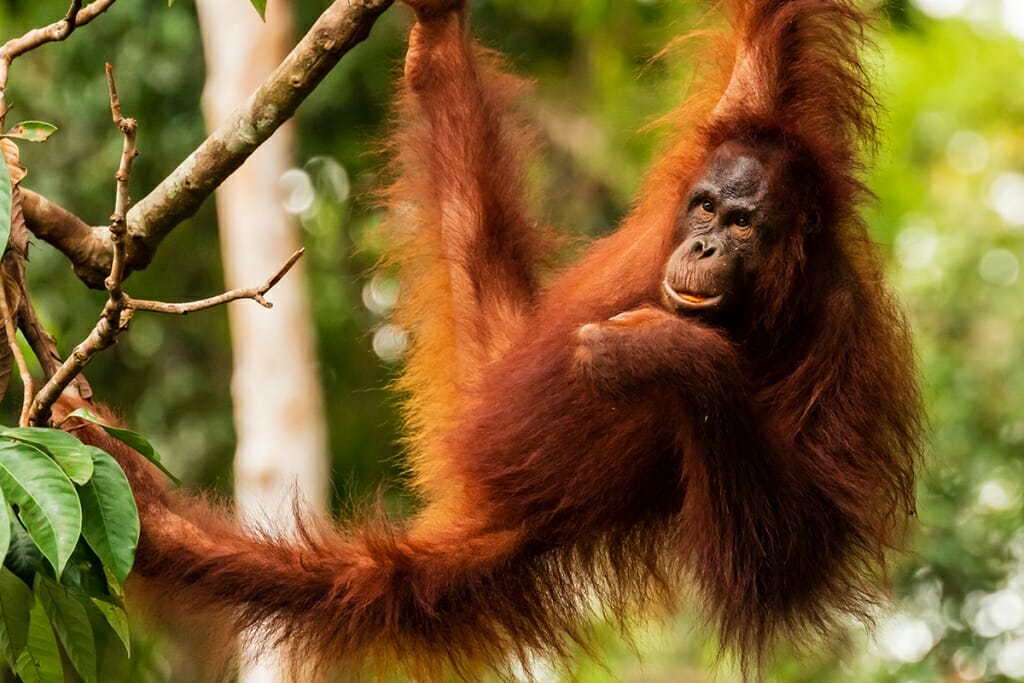
One of the most iconic animals of Borneo, the Orangutan is also one of the most threatened. Did you know that the Orangutan builds itself a fresh nest out of tree branches each night? While the branches are fresh, they are supple and soft to sleep on. But by the following night, the twigs dry up, and the nest becomes too hard for the shaggy ape to sleep in.
Sadly, the Orangutan is Critically Endangered in Borneo mostly due to habitat conversion to oil palm plantations. The best place to see Orangutan in Borneo is the Kinabatangan River and Deramakot Forest Reserve.
Proboscis monkey
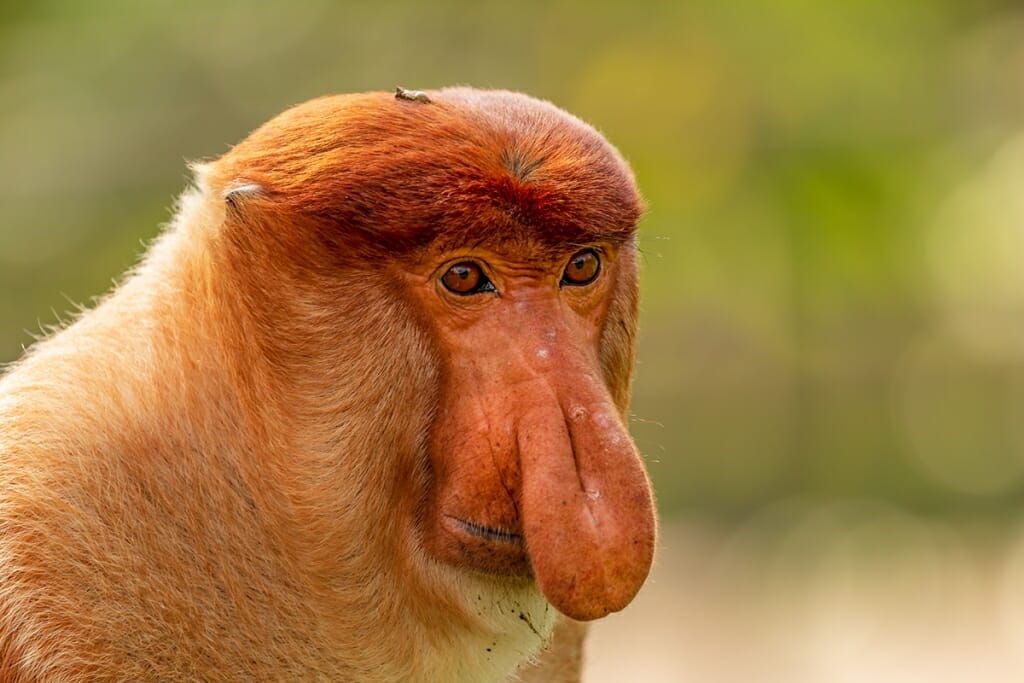
The Proboscis monkey has got to be one of the oddest-looking primates on earth and one of the most comical animals in Borneo. Their bulging pot bellies and oversized noses give them the look of grumpy old men. Unfortunately, just like their bigger relative – the Orangutan- the Proboscis monkeys are endangered mainly due to the loss of habitat, which is being converted to oil palm plantations at an unprecedented rate.
For now, they can be easily seen on the Kinabatangan River or in Bako National Park if you are in Sarawak.
Pig-tailed macaque
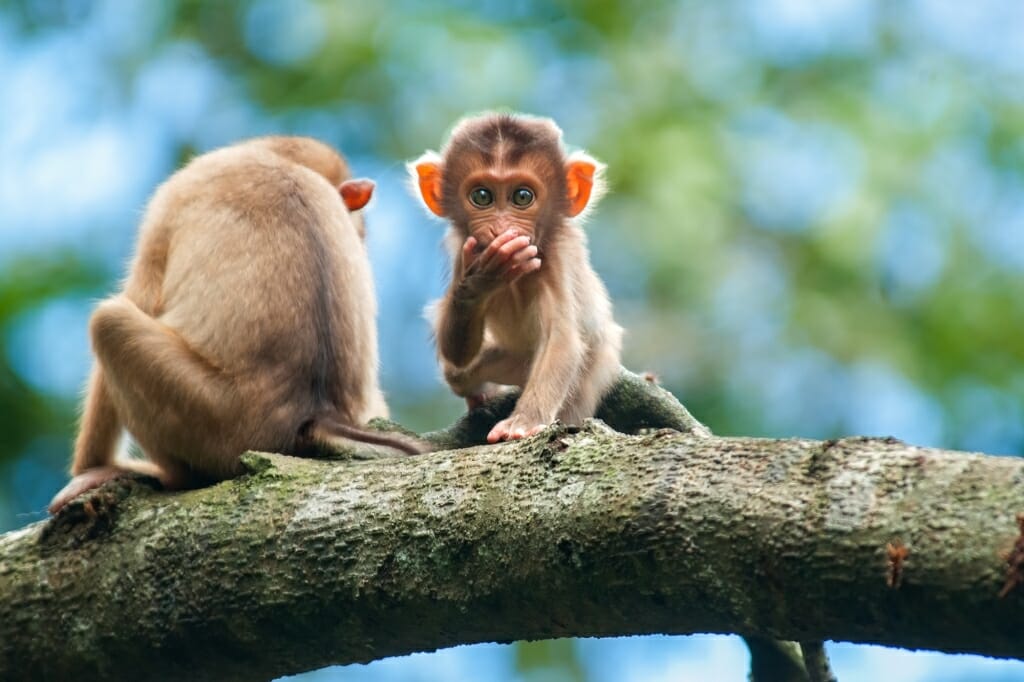
If you have spent any time on the Kinabatangan River, you are well familiar with Pig-tailed macaques. They are bold, conspicuous animals that travel around in small troops. Because of their apparent lack of fear of humans, they are fun animals to watch as they carry on about their day playing, fighting, grooming each other and often making fools of themselves.
Borneo pygmy elephant
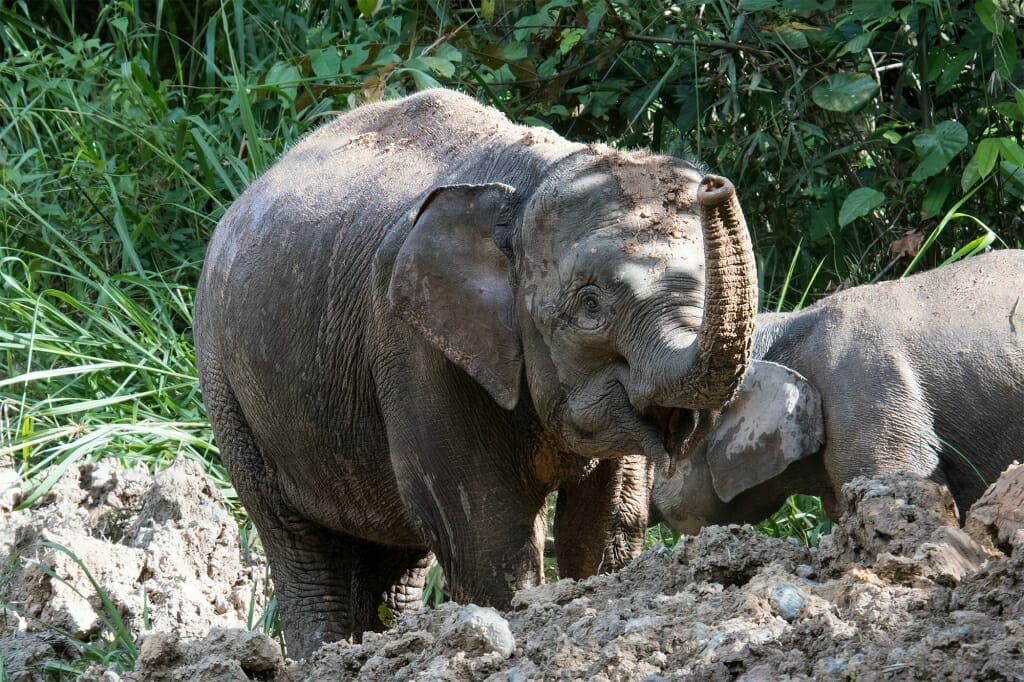
A type of Asian elephant, the Pygmy elephant is the largest terrestrial mammal in Borneo. Though, that doesn’t mean that it is easy to see. The Kinabatangan River, Deramakot Forest Reserve and Danum Valley Conservation Area are all good spots to look for elephants.
Sunda Clouded leopard
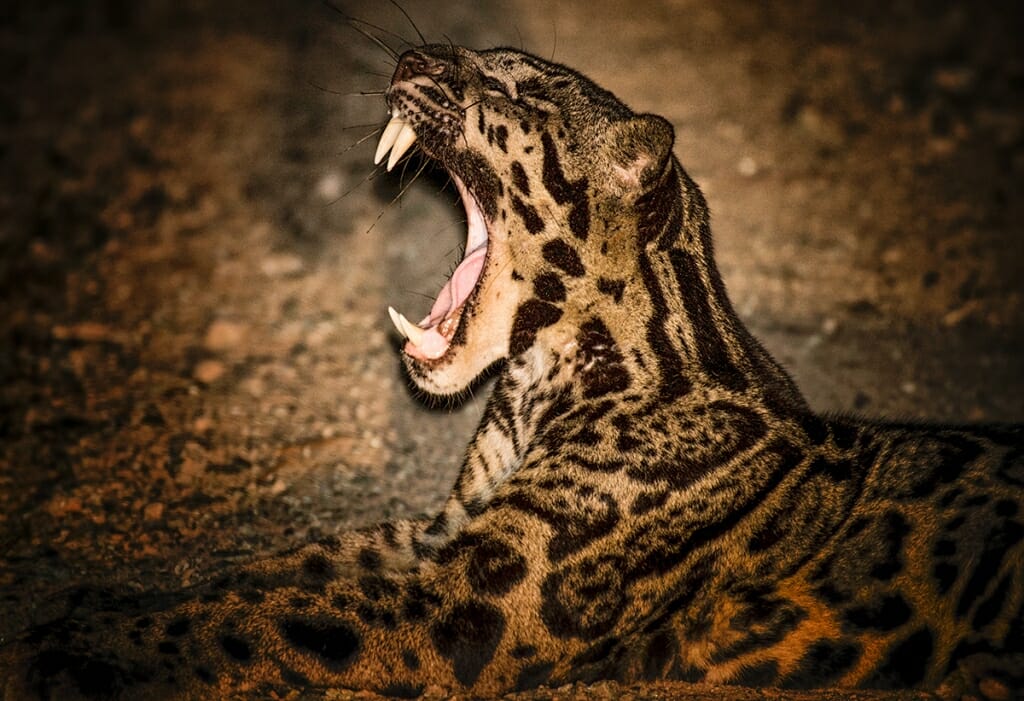
Arguably the most beautiful wild cat on earth, the Sunda Clouded leopard is Borneo’s only big cat. Currently listed as “Vulnerable” on the IUCN Red List of Threatened Species, it is an elusive nocturnal hunter that is very rarely observed in the wild. For your best chance of spotting the Clouded leopard, head to Deramakot Forest Reserve with Adventure Alternative Borneo (see details below).
Marbled Cat
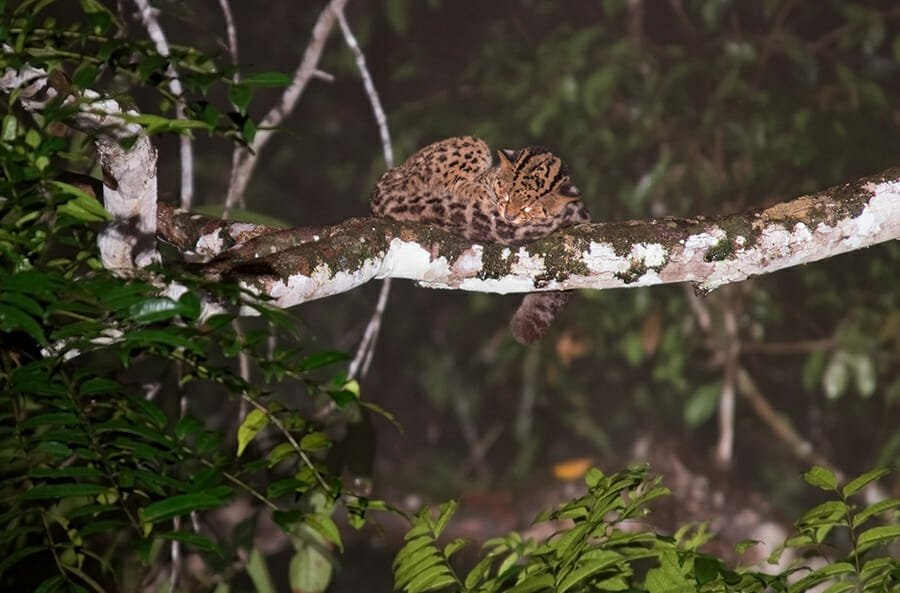
The Marbled cat looks like a small clouded leopard. Its coat is similarly patterned, and its tail is equally long. And just like the Clouded leopard, the Marbled cat spends most of its time up in the trees. They are fond of ambushing flying squirrels by sitting on a branch and patiently waiting for them to emerge from their tree-hollow homes.
Not much is known about the Marbled cat’s ecology in the wild. It is one of the most secretive Borneo rainforest animals.
Sunda Leopard cat
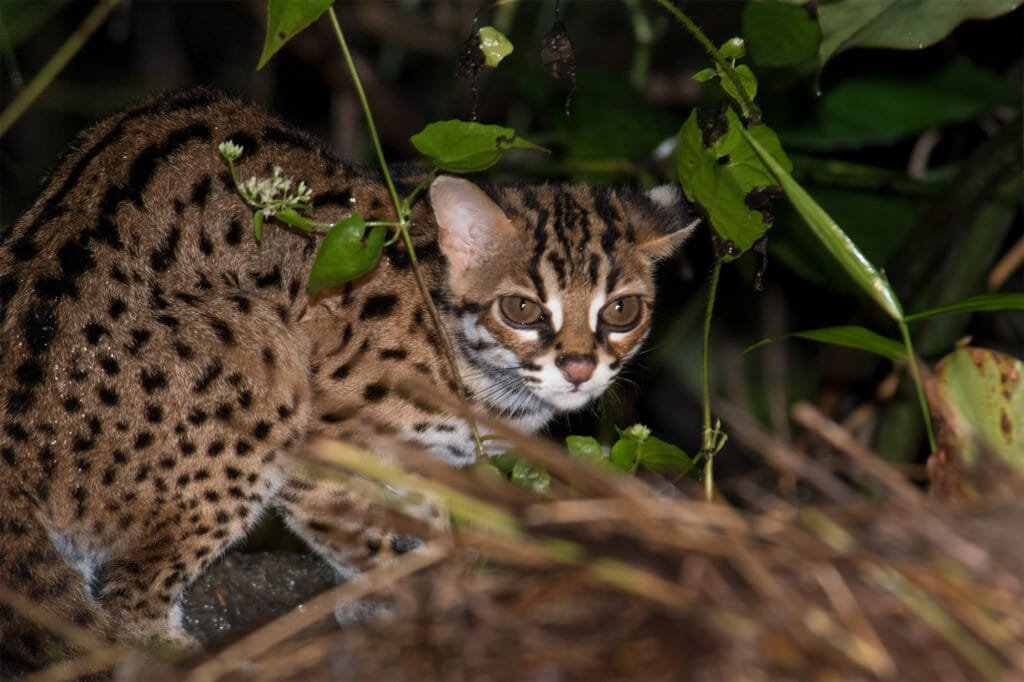
The most common, or rather the least uncommon, wild cat in Borneo, the Sunda leopard cat, is a small and handsome hunter. It is quite tolerant of habitat disturbance, and it can be occasionally found in oil palm plantations. To see it in a more natural setting, take a night drive in Danum Valley or Deramakot Forest Reserve.
Malayan sun bear
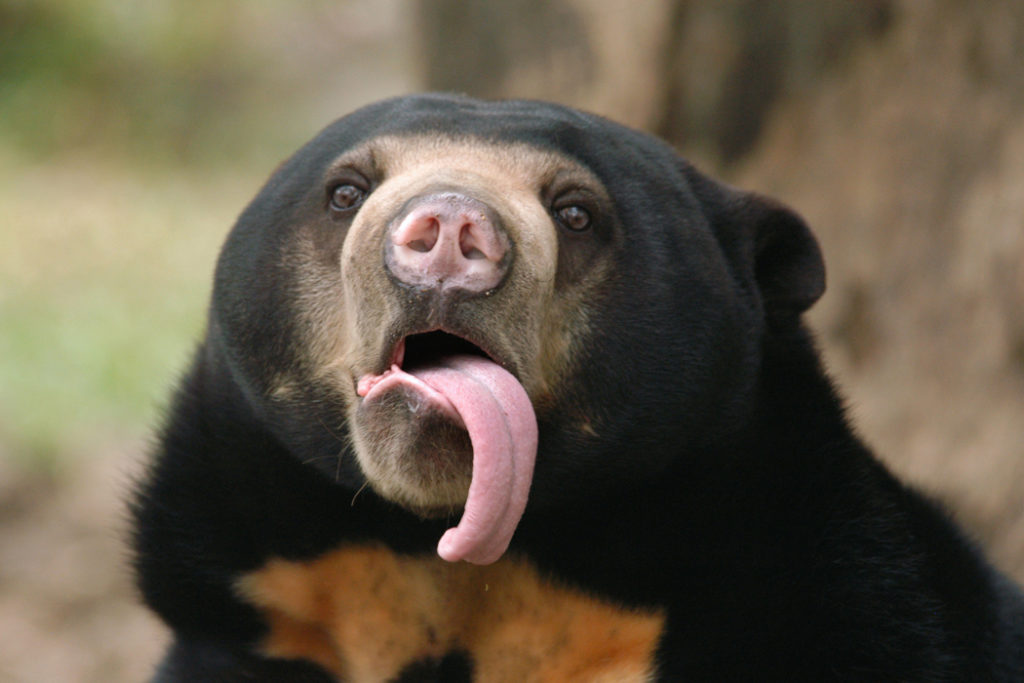
Malayan sun bear is the smallest and the most arboreal of all bears. Perhaps the most distinguishing feature of the sun bear is its exceptionally long tongue that the bear uses to extract honey and insects.
To see the sun bear in Borneo, you will need a lot of time, dedication and, most importantly, luck. They are occasionally spotted in Deramakot Forest Reserve.
Maroon langur
Also known as the Leaf monkey, Maroon langur is one of the cutest Borneo rainforest animals. They are fun to watch as they leap across the forest canopy with incredible agility. The best place to see them up-close is Danum Valley Field Centre.
It is listed as “Least Concern” on the IUCN Red List of Threatened Species, and its population is considered stable.
Sunda Colugo
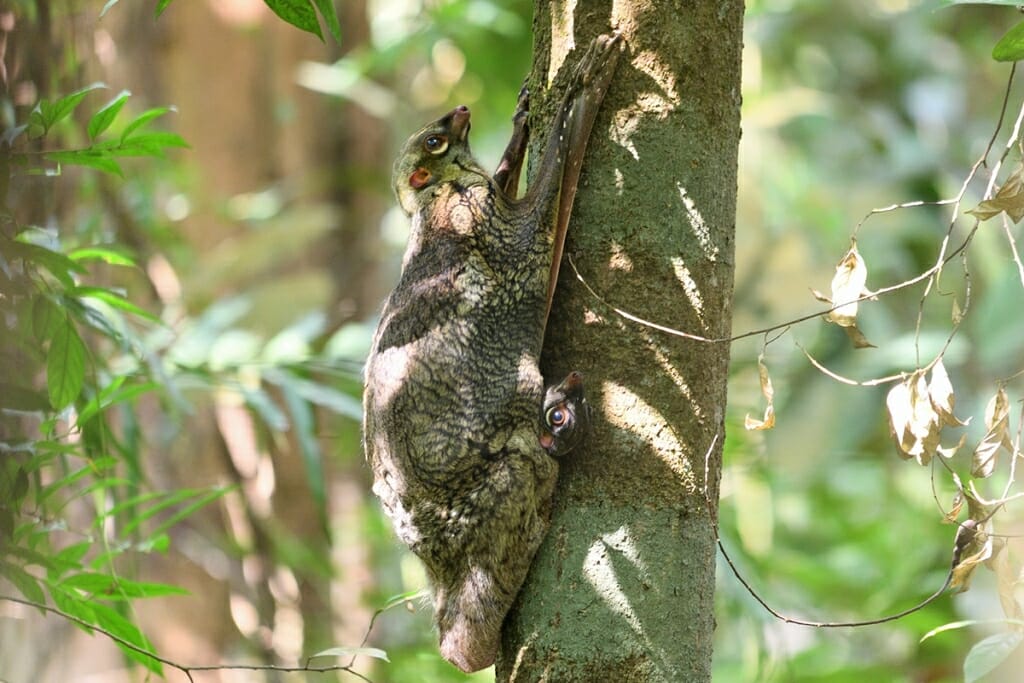
Often referred to as the flying lemur, the Colugo doesn’t actually fly, no it is a lemur. But it is able to glide across considerable distances using flaps of extra skin that extend between its paired limbs. It is active at night, and the best place to see it is the Deramakot Forest Reserve.
Sunda Colugo is listed as “Least Concern” on the IUCN Red List of Threatened Species.
Philippine slow loris
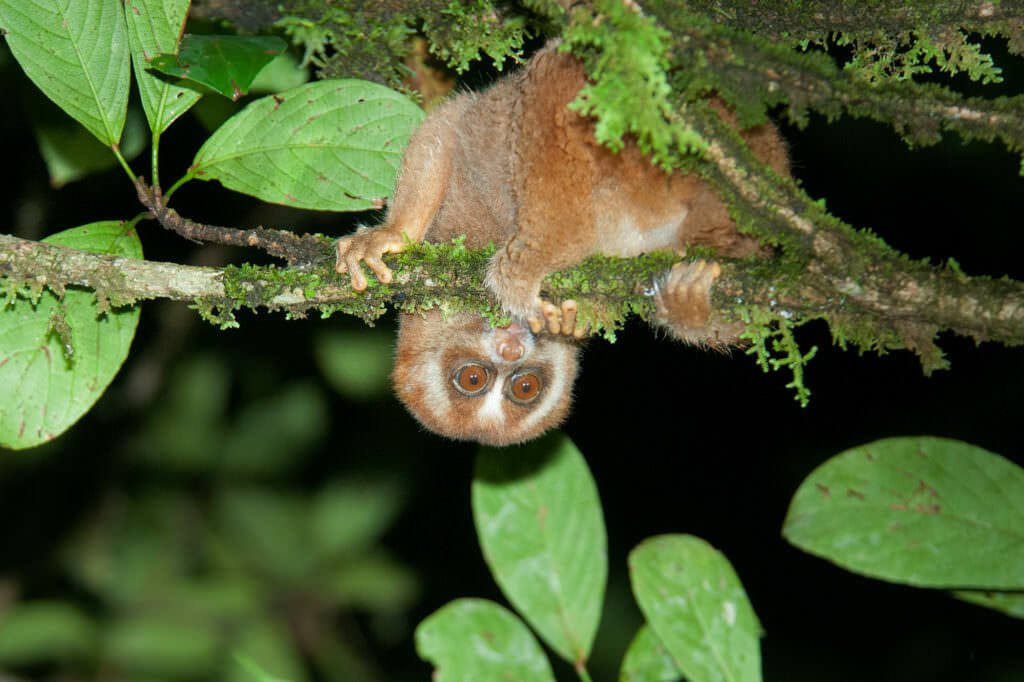
The Slow loris lives high up in the canopy and comes out to forage for food at night. Growing to all of 300 grams in weight, this big-eyed primate is one of the smallest slow lorises in the world. It is listed as “Vulnerable” on the IUCN Red List of Threatened Species, but it can be seen without much trouble on night drives in Deramakot and Danum Valley.
Western tarsier
The Tarsier looks as if it was made from spare parts. Its giant eyes take up most of its face; its fingers are as long as its entire arm, and its incredibly long back legs could have come from a frog.
It is listed as “Vulnerable” on the Red List of Threatened Species, and its population is decreasing. The best chance of spotting a tarsier will be on a nocturnal jungle hike.
Malay Civet

Malay civet is one of the most attractive Borneo civets. It is reasonably easy to see at night, even around villages. The best places to see Malay civet, however, are the protected areas on the island. Kinabatangan River, Danum Valley, and Deramakot Forest Reserve are all good places to spot this handsome viverrid.
Common Palm civet
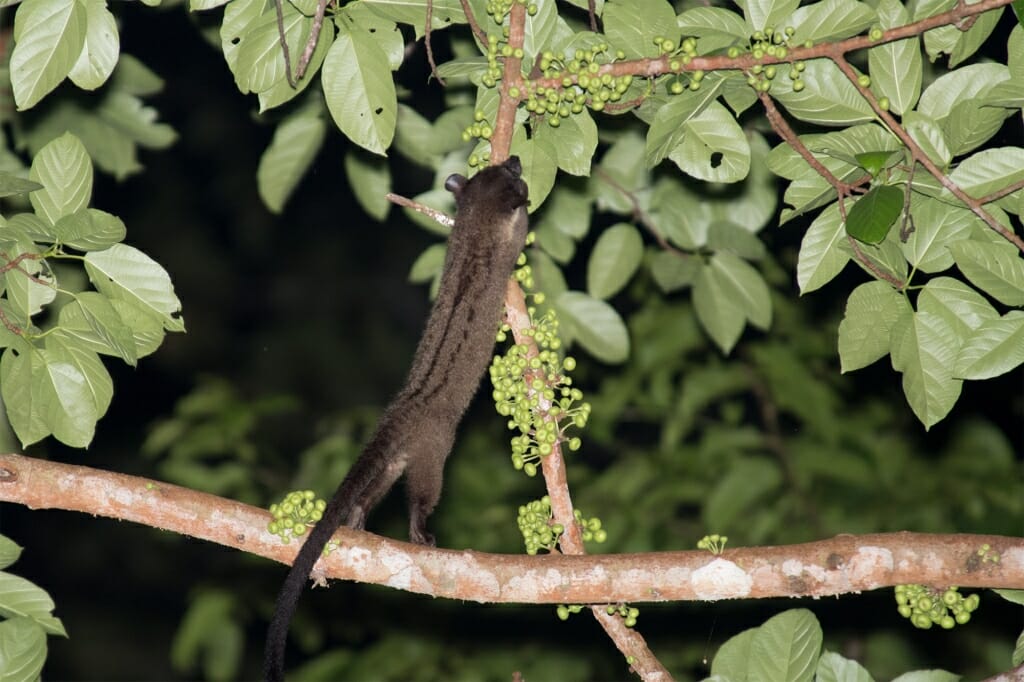
Another common nocturnal animal is the Common Palm civet. Unlike its primarily terrestrial cousin – the Malay civet, you are most likely to see a Common Palm civet in the tree branches. This is one of the most common animals in Borneo, and you won’t have trouble spotting it in any of the protected areas.
Banded palm civet
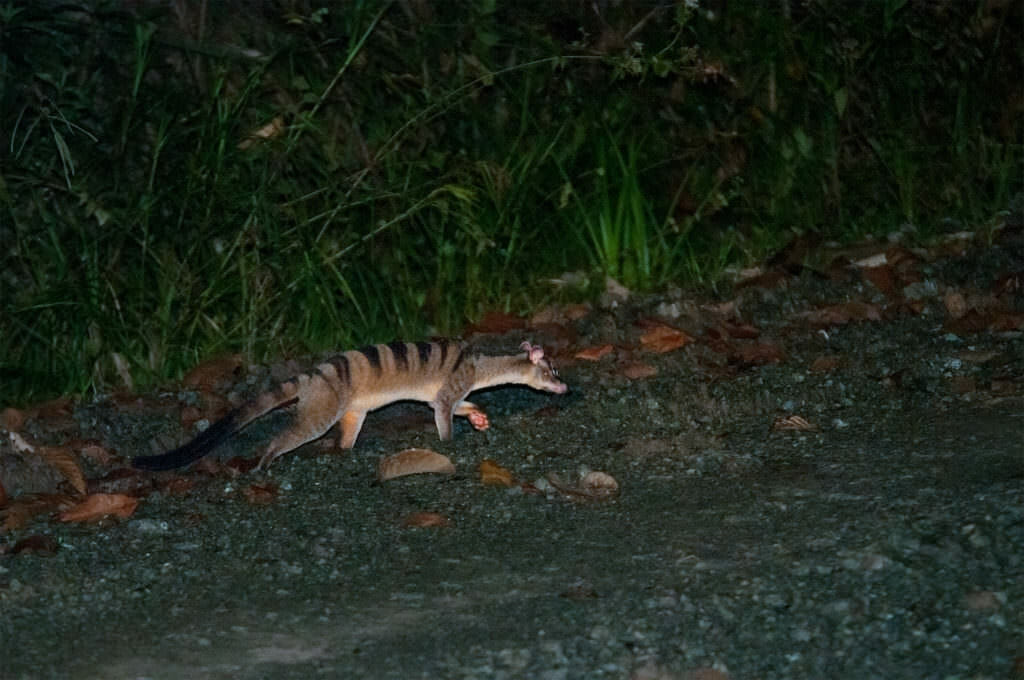
Banded palm civet is one of the rarest Borneo rainforest animals. Like Malay civet, it is mostly terrestrial in habit, but it is much, much harder to see in the wild. Banded civets have quite a broad distribution range and have some tolerance for habitat modification, but they probably naturally occur in low densities.
For your best chance of spotting this very handsome civet, head to Deramakot Forest Reserve. This is where the image below was taken. We’ve seen only two or three-banded civets during a couple of weeks in Deramakot.
Binturong
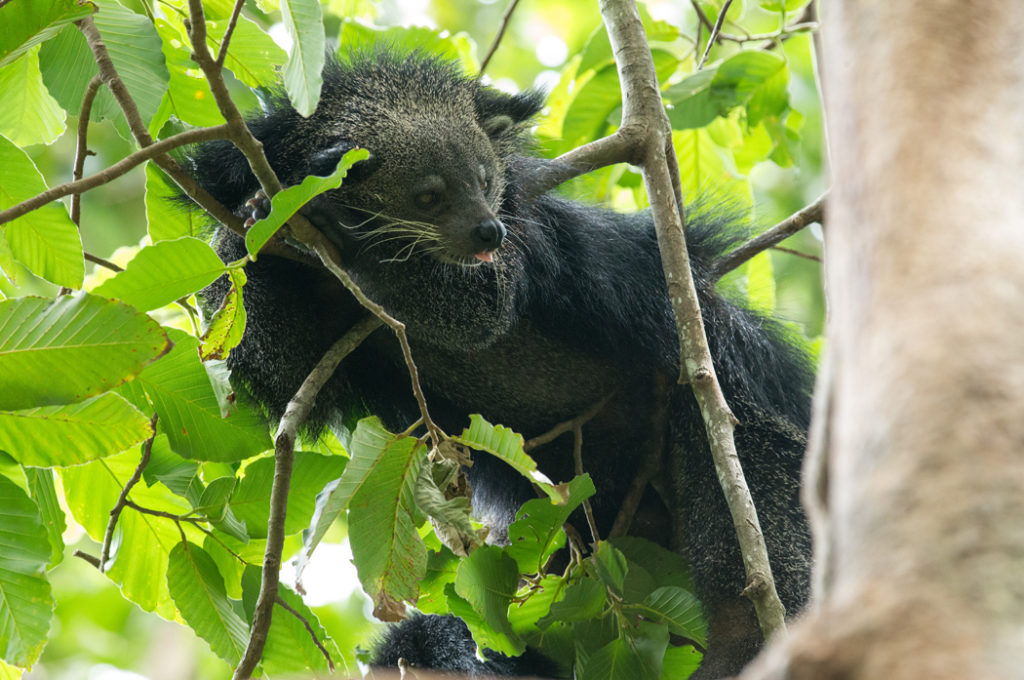
The most unusual member of Borneo’s civet family is the Binturong. Its shaggy coat makes it look like it has just gotten out of bed. Sadly, the binturong population is declining across Asia, and it has been listed as Vulnerable since the 1980s. Not surprisingly, it is pretty rare across its range.
The good news is that binturongs are not as uncommon in Deramakot Forest Reserve. The bad news is that they usually snooze very high up in the canopy of Borneo’s giant rainforest trees, making them very difficult to see, especially at night.
Red giant flying squirrel
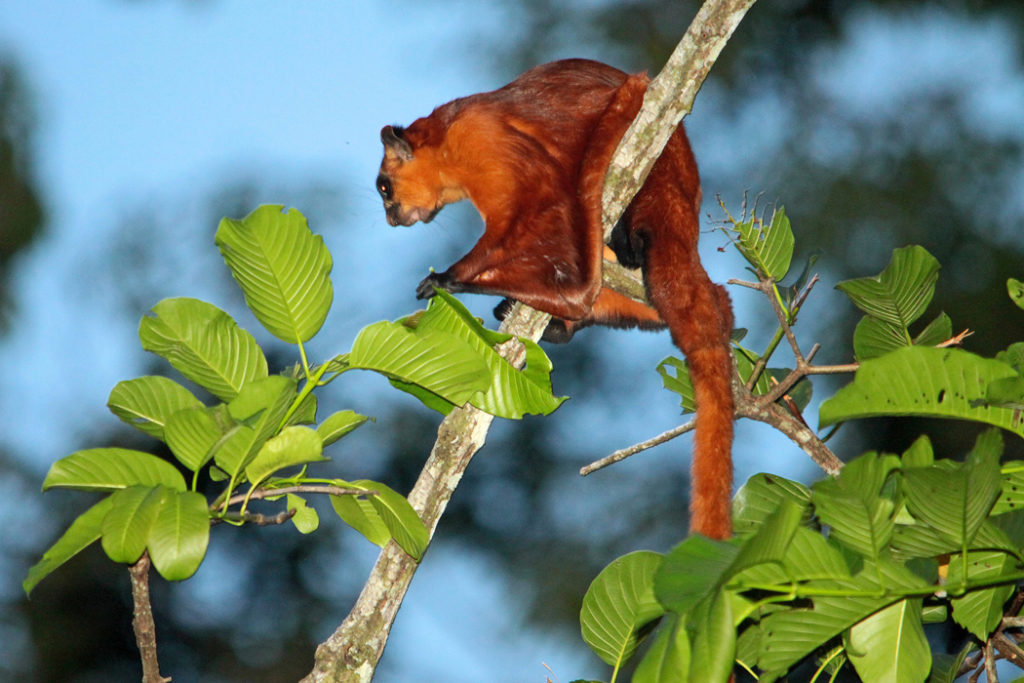
Borneo is home to a variety of flying squirrels, and the Red giant flying squirrel is the largest of them all. Despite their name, flying squirrels don’t actually fly. But they are able to glide over large distances with the help of a flying membrane, which is essentially a flap of skin that extends from their front feet to the back feet, as you can see in the image below.
Red giant flying squirrels are some of the most abundant animals in Borneo, and if you spend any time in the jungle at night, you are virtually guaranteed to see them.
Bornean pygmy squirrel
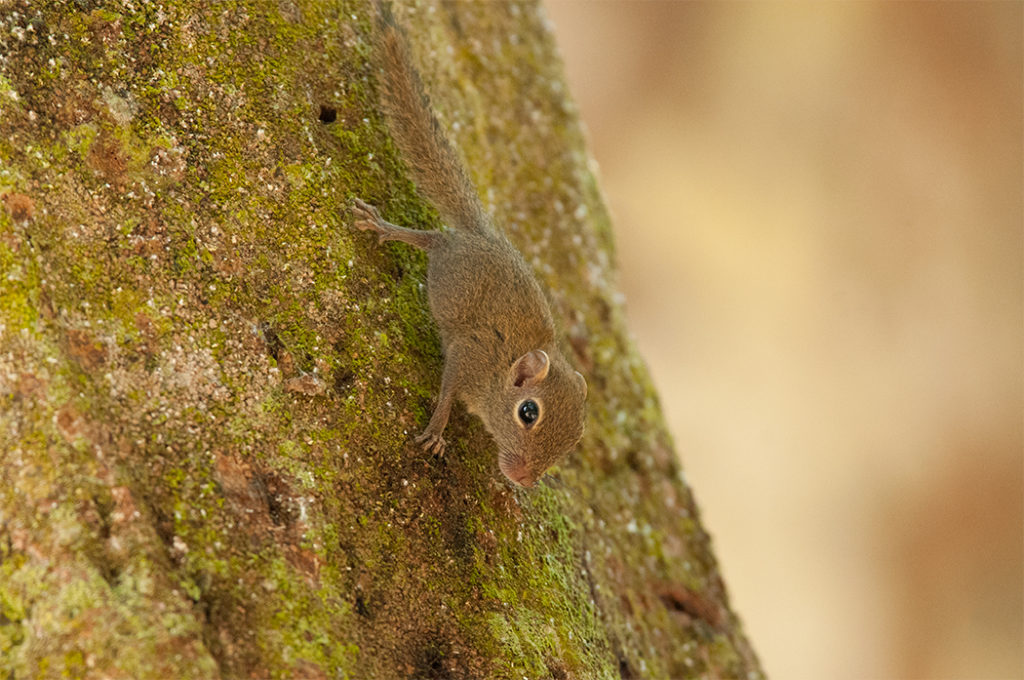
On the opposite side of the size scale from the giant flying squirrel, the Bornean pygmy squirrel weighs only about 20 grams and grows to 7.5 centimetres (plus a five cm-long tail). This adorable tiny rodent is the world’s smallest diurnal squirrel.
It is usually active around the bottom half of tree trunks, more or less at our eye level, which makes it reasonably easy to spot. I have seen pygmy squirrels at Kinabatangan River and in Deramakot. They are tiny, but they move about quite rapidly, so you usually pick up movement out of the corner of your eye and then see the animal itself.
Sunda skink

A skunk in Borneo? You bet! The Sunda skunk or Sunda stink badger is not closely related to the North American skunk, but it can sure spray you with a foul-smelling substance that it secretes from its anal scent gland.
But don’t worry, there isn’t much chance of stumbling on the Malayan stink badger in Borneo. These animals are quite difficult to find. For the best chance, head to Deramakot Forest Reserve, where I took the image below.
Rhinoceros hornbill
Rhinoceros hornbills are among the most majestic birds in Borneo. It is the national bird of Malaysia and the state bird of Sarawak.
Like other hornbill species, the Rhinoceros hornbill displays interesting breeding behaviour. The pair builds a nest in a tree hollow, and once the eggs are laid, the male seals the female in the hollow, using mud and feces to construct a wall. Only a small hole is left so that the male can pass the food to the female and to the chicks once they are hatched.
The Rhinoceros hornbill is listed as “Vulnerable” on the IUCN Red List of Threatened Species, but Kinabatangan River is a good spot to see it, along with a few other hornbill species.
Black and red broadbill
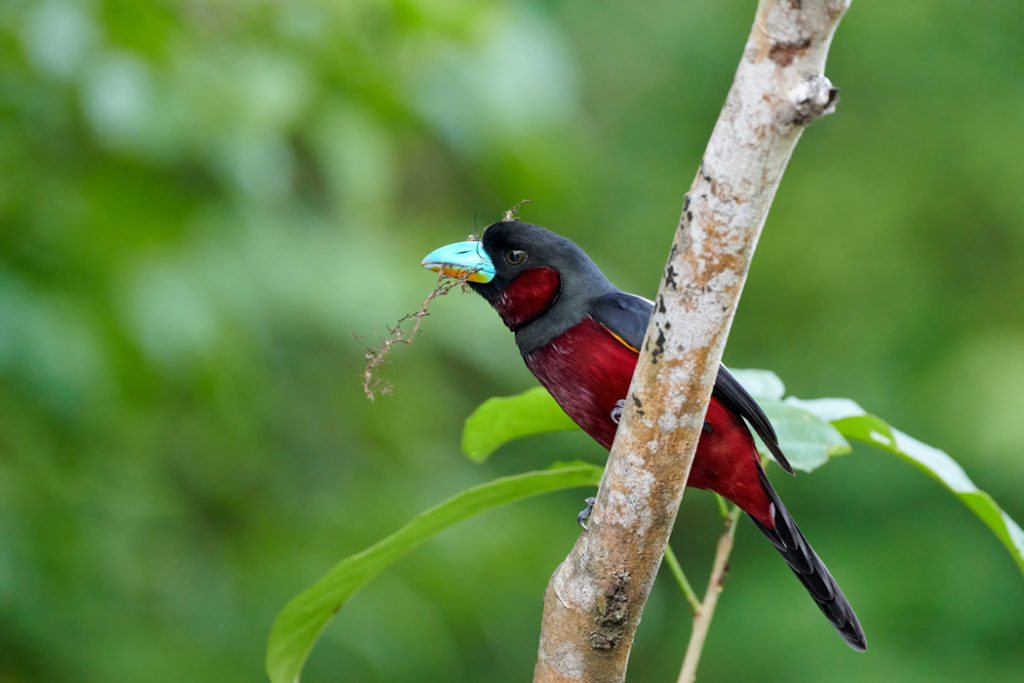
One of my absolute favourite birds in Borneo is the Black and Red broadbill. These birds are actually more colourful than just black and red, but it must’ve been impractical to include any more adjectives in their name.
They can be seen in most protected areas, but the best place to see them is the Kinabatangan River, where they build their nests to hang off the tree branches that arch above the river.
Buffy fish owl
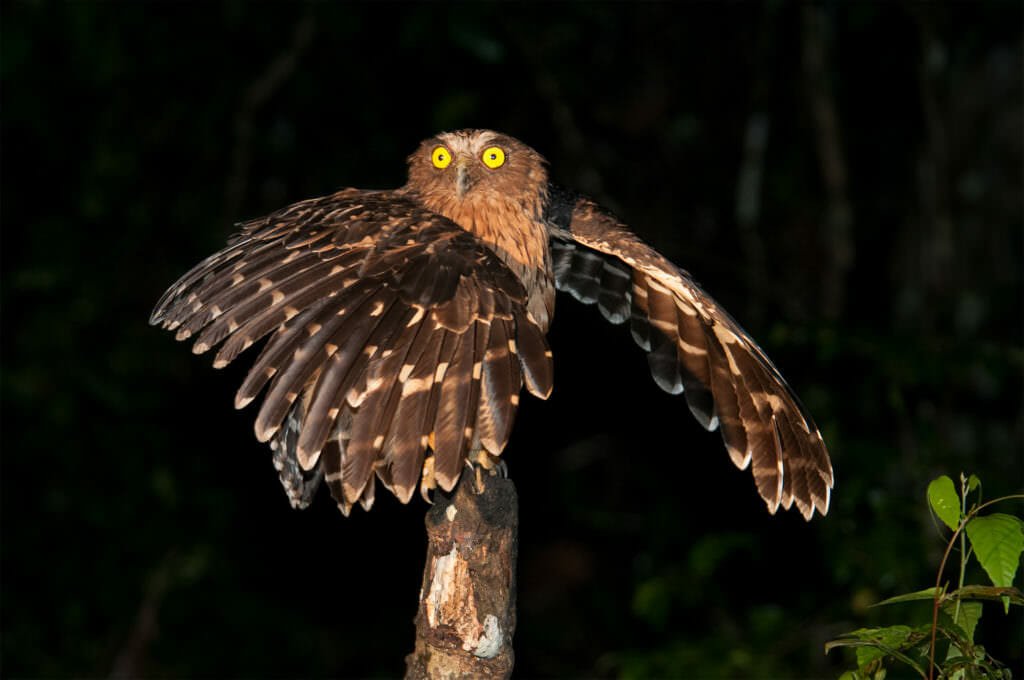
Buffy Fish Owl is the most common nocturnal bird in Borneo. It is instantly recognizable by its impressive eyebrows that are, in fact, ear tufts that all fish owls have. You can easily spot Buffy fish owls at night, practically in any protected area you may wish to visit.
They are abundant on the Kinabatangan River, in Deramakot Forest Reserve and in Danum Valley. Their diet is not restricted to fish and aquatic organisms; they also feed on reptiles, frogs and even small birds.
Crested serpent eagle
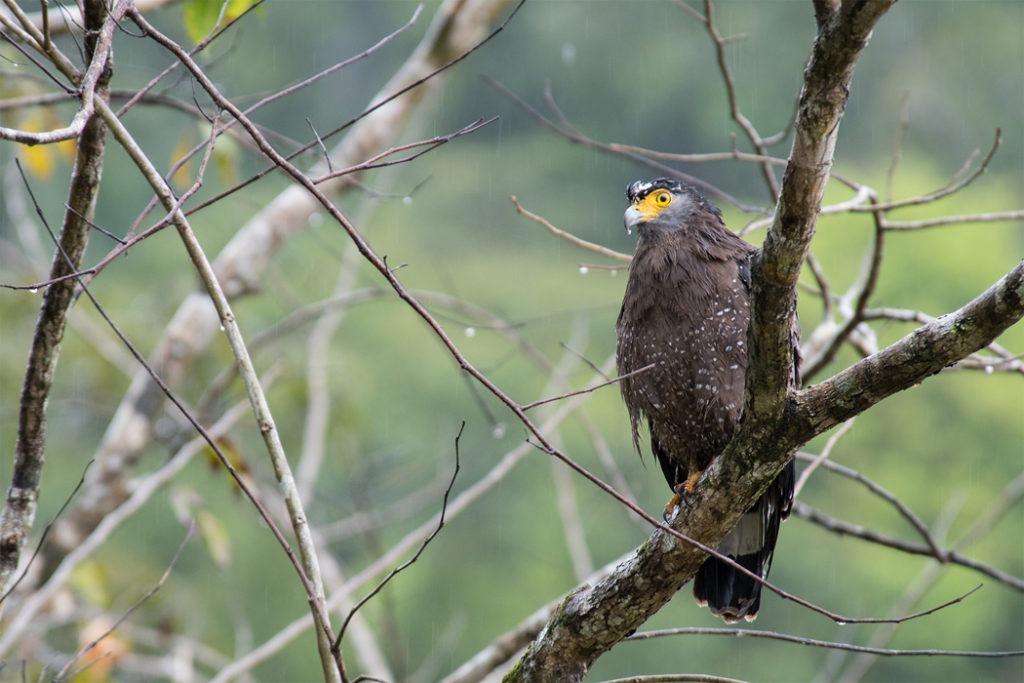
While the owls dominate the night sky, the most familiar bird of prey during the daylight hours in Borneo is the Crested serpent eagle. It is not uncommon to see it swooping in to grab a lizard or a snake from the grass.
This eagle is quite common across most of Borneo and can be easily spotted at Kinabatangan River, Danum Valley and Deramakot. You can even see them flying above the road as you travel across Borneo.
Blue-eared kingfisher
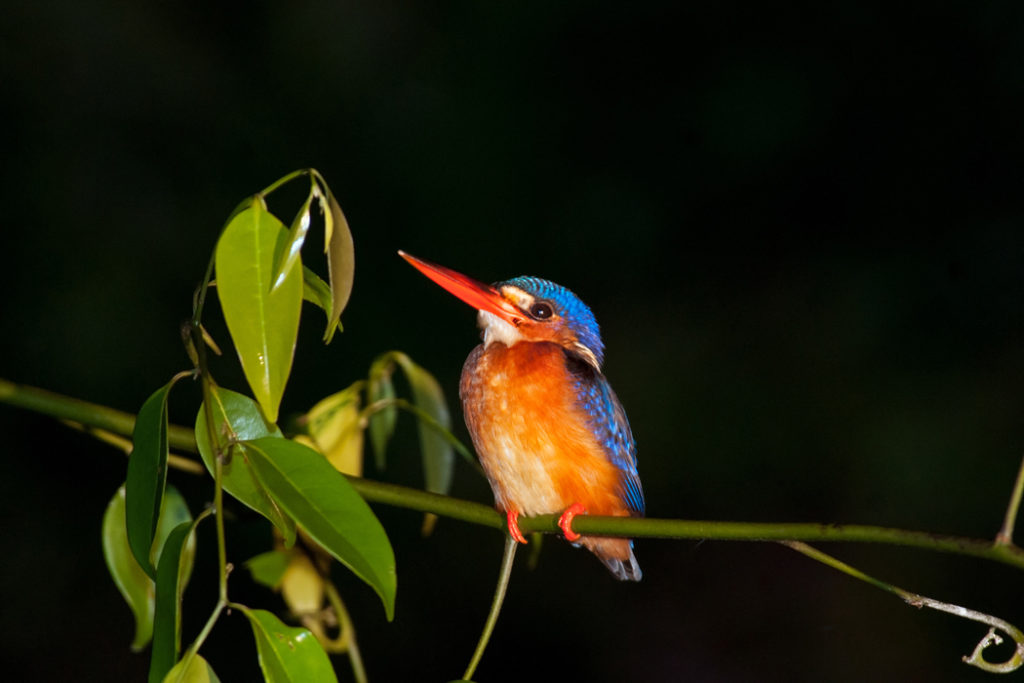
The Blue-eared kingfisher is one of the most brilliantly coloured birds in the Borneo jungle. They occur near forested streams where their bright colouration makes them easy to spot despite their small size (16cm).
The best way to see them is on a boat safari on the Kinabatangan River. They are relaxed enough to allow the boats to approach quite closely and will happily hunt right in front of you.
Saltwater crocodile
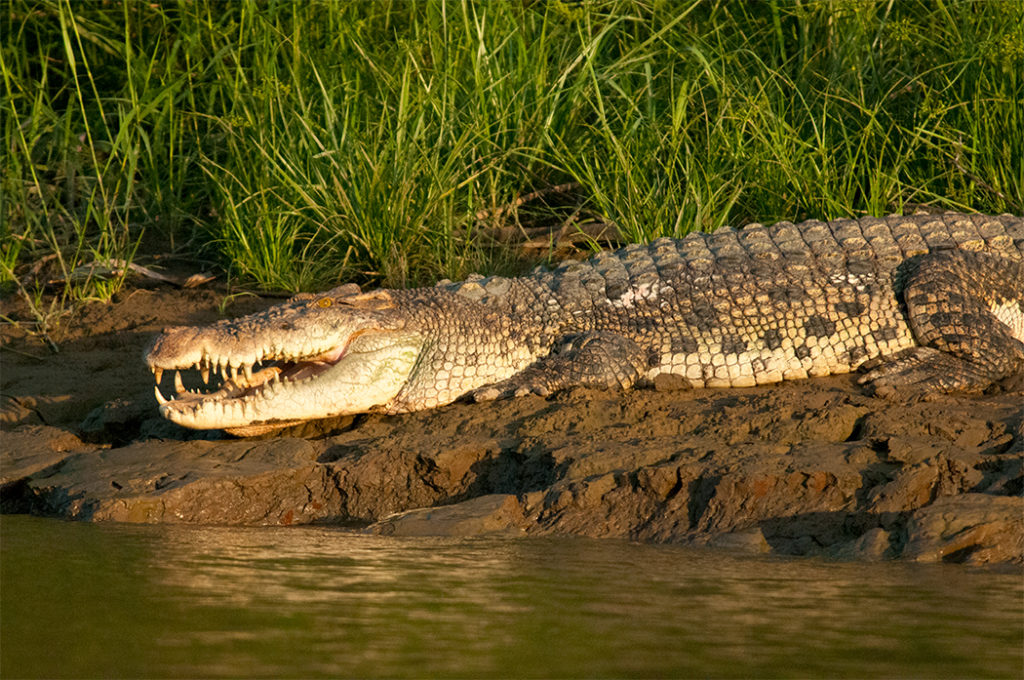
Yes, of course, there are crocodiles in Borneo. They are easy to see on the banks of the Kinabatangan River. Sukau locals are quite nonchalant about living with crocodiles, even though these are the saltwater crocs – the most dangerous crocodiles on earth.
The crocodiles on the Kinabatangan River are smaller than their cousins in Australia, which may explain the peaceful relationship between riverside villages and the ancient reptiles.
Cave Racer
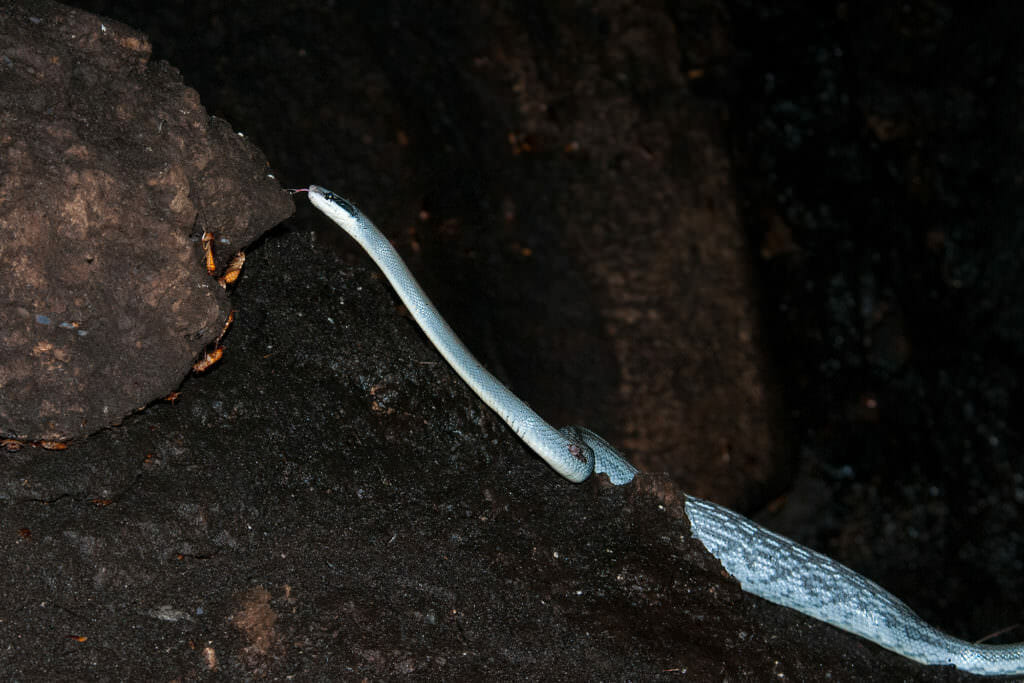
As its name suggests, the Cave racer lives in limestone caves, including the magnificent Gomantong cave in Borneo. Gomantong cave is home to a few million bats, which is precisely why Cave racers like this cave. They catch their prey as it flies by and kill it by constriction, like pythons, rather than with poison.
The best time to see them in Gomantong cave is at dusk when the bats are becoming more active in preparation for their epic exodus from the cave. Watching millions of bats emerge from Gomantong cave each night is quite a spectacle.
Grey-tailed racer
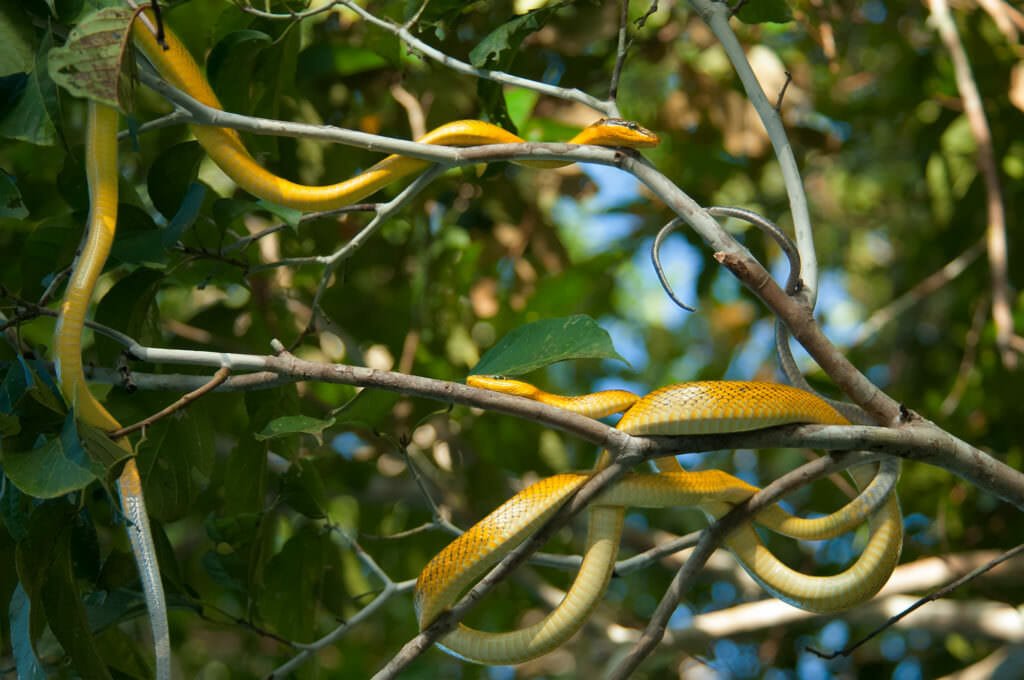
Another racer you may encounter in Borneo is the Grey-tailed racer. This snake prefers to live in the trees and rarely descends to the ground. It feeds primarily on birds that it catches in mid-air while hanging off tree branches.
I haven’t heard of Grey-headed racers congregating in groups, but on one of my trips to Kinabatangan River, we spotted four (!) Grey-headed racers camped up in a tree together.
Wallace’s Flying Frog
Borneo fauna is unique for the abundance of flying animals. In reality, most species don’t actually fly, but glide from one tree to another. The Wallace’s flying frog is the most spectacular gliding frog on the island. It can be spotted at night after heavy rain.
While Wallace’s flying frog population is decreasing, it is currently listed as “Least Concern” on the IUCN Red List of Threatened Species.
Best Places To See Borneo Wildlife in Sabah
The Malaysian state of Sabah is Borneo’s greenest state, with the highest proportion of the original forest cover remaining intact despite the alarmingly high deforestation levels. The state has an extensive system of National Parks and protected areas and offers some of the finest wildlife-watching opportunities on the island, as well as some of the best offshore islands in Borneo.
Danum Valley
Lying about 2.5 hours by road from the coastal town of Lahad Datu, the Danum Valley Conservation area is home to one of the world’s oldest rainforests. Estimated to be 130 million years old, this forest has a distinctly primeval feeling to it.
Thick clouds of mist float lazily over the tops of some of the tallest tropical trees on Earth. Lush vegetation in all possible shades of green covers every surface in the forest.
The wildlife is everywhere in Danum Valley: Bearded pigs and Sambar deer frolic on the lawns around the living quarters, and the cheeky Maroon langurs frequently visit the camps. The suspension bridges over the Segama River and canopy towers bring you even closer to wildlife. But the best wildlife watching in Danum Valley is at night on a safari drive. You are virtually guaranteed to see Flying squirrels, a few species of civets, Colugos and Slow lorises. And if you are lucky, you may spot Borneo pygmy elephants or even a Clouded leopard.
There are two accommodation options in Danum Valley: the luxurious Borneo Rainforest Lodge and the simpler rooms at the Field Center.
Booking the Field Center accommodation independently can be frustrating, as there are no reliable email contact details for the Field Center office in Lahad Datu. The address of the office is: Block 3, MDLD 3286, Ground Floor, Fajar Centre, Lahad Datu, Sabah Ph: + 60 89 880 441
At the time of writing, the office could be contacted via the staff’s personal e-mail addresses: Suzan Kilin [email protected] and Rosnita Razalie [email protected]. Here is the Danum Valley Field Center 4D/3N sample itinerary
Alternatively, you can enlist the help of an eco-tour agency like Sticky Rice Travel, which has a variety of different tour options for Danum Valley, including camping.
Deramakot Forest Reserve
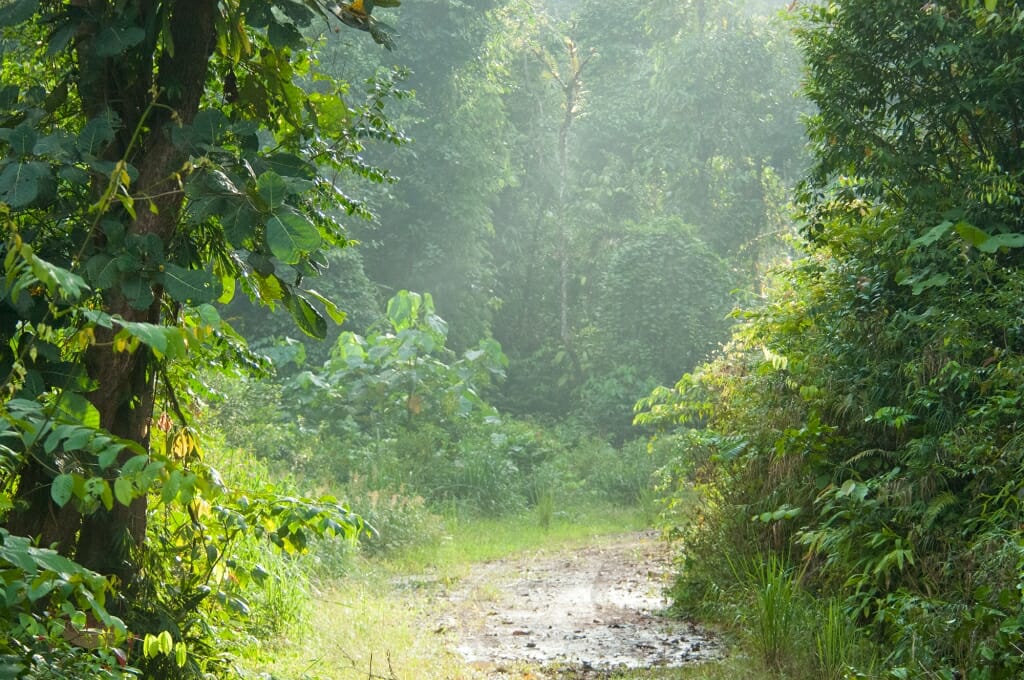
Deramakot Forest Reserve is located in the heart of Sabah, about a 4-hour drive from Sandakan. This little-known reserve is the pride and joy of the Sabah Forestry Department. Granted, a logged forest doesn’t sound like a winning wildlife watching destination, but Deramakot is a different story entirely.
It is managed for reduced impact logging, meaning that only the trees that can be extracted with minimal impact to their surroundings are removed. And once an area is harvested, it is left to rest for 40 years.
As a result, the forest retains its wild nature. It provides habitat for an impressive 75% of mammal species in Sabah, including all five species of Borneo’s wild cats.
I have not seen such a high diversity of wildlife anywhere else in Asia. It is the best place in Southeast Asia for spotting rarer species, like the Clouded leopard, Marble cat, and Otter civet, as well as Bornean Orangutans and Borneo Pygmy elephants.
There are no shops or petrol stations in Deramakot, which means that you either have to bring your own 4WD, all food, and petrol with you, or you can join an organized tour with an accompanying guide, a driver and a cook. Adventure Alternative Borneo was the first commercial outfit to initiate tours to Deramakot, and it still remains the best option on the market.
The main accommodation option in Deramakot is the three-bedroom chalets that come equipped with hot water showers and air-conditioning.
Kinabatangan River

Of all Borneo wildlife hotspots, the lower Kinabatangan River is where you are most likely to experience Borneo animals up close. Sadly, the reason for this abundance is that wildlife has nowhere else to go.
Pushed by the encroaching oil palm plantations, the animals are trapped in the narrow stretch of forest on the river bank. If more land is cleared, we will lose this wildlife haven for good. But for now, the wildlife is safe.
The visits to Kinabatangan revolve around the river cruises. There are early morning, late afternoon, and night cruises. The morning and afternoon cruises are perfect for birds and primates.
You would be pretty unlucky not to spot some typical Borneo animals – a few species of Hornbills, the pig-tailed macaques, crocodiles and the endangered Proboscis monkeys – the world’s oddest-looking monkeys. The only other good place for spotting Proboscis monkeys in Borneo at close range is Bako National Park in Sarawak.
Lower Kinabatangan River is one of the best places to see orangutans in Borneo. The Critically Endangered apes are being pushed to the brink of extinction by habitat loss. Another iconic Borneo animal you may encounter on the river is the Borneo Pygmy Elephant. Even if you only have time for a single safari on the river, you are likely to see quite an abundance of rare wildlife.
The night cruises bring you up close to the nocturnal species: civets, Slow lorises, owls, and, if you are lucky, even the endangered Flat-headed cat. The river itself is a different world at night – silent and misty.
The access point for Kinabatangan is the village of Sukau, located about 2 hours away from Sandakan. The accommodation options on the river range from the luxurious Sukau Rainforest Lodge to the more basic but rustic Kinabatangan Jungle Camp.
There are a number of homestay options on the river, the best of which is Osman’s Homestay. Osman is a very talented spotter. I had some of the best close encounters with wildlife on a cruise with Osman, including the sighting of a Philippine slow loris and a Western tarsier in the images above.
If you are not the jungle trodding type but still want to see Asia’s most Endangered Great Apes, you can visit them in the semi-wild setting of a rehabilitation centre.
Sepilok Orangutan Rehabilitation Centre
By Sally Lucas from Our 3 Kids v The World
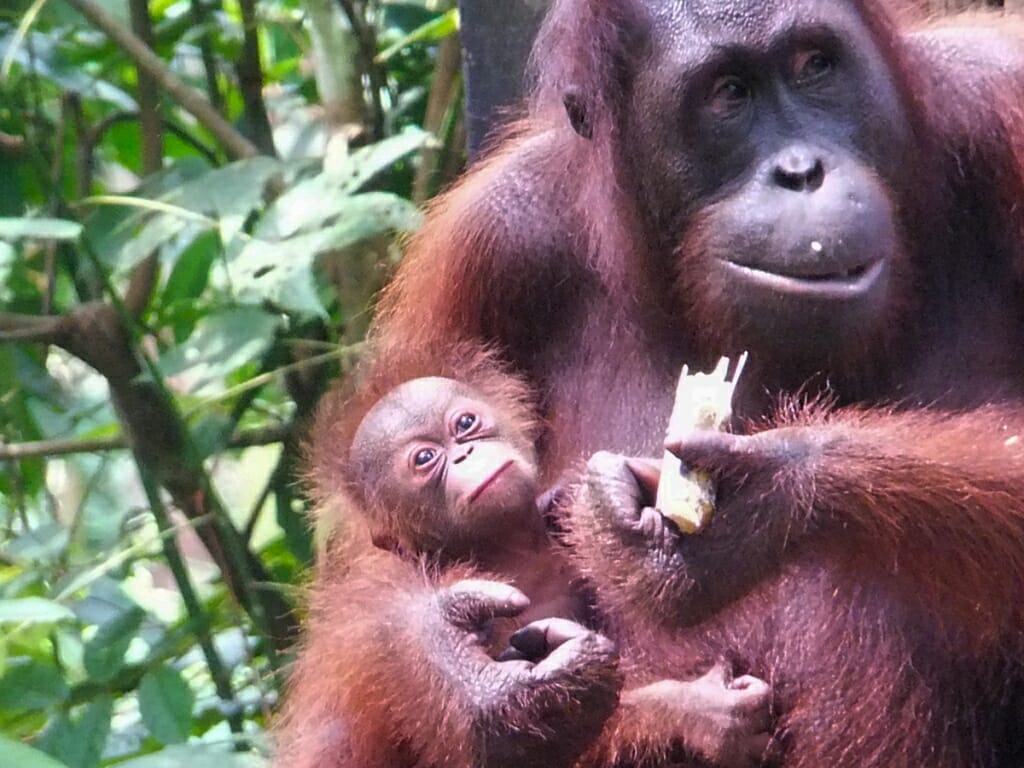
Visiting Sepilok Orangutan Rehabilitation Centre was one of the highlights of all my travels with the kids. Located near Sandakan in Malaysian Borneo, it is a rehabilitation centre for orangutans that have been poached, kept as pets or have lost their home due to deforestation. The Centre releases the animals into the surrounding forest, and once rehabilitated, they will be released back into the wild.
You can never be guaranteed to see an orangutan as they tend to appear when they feel like it. The staff at Sepilok will put out food twice a day, and which orangutans turn up is who you will see. Feeding times are around mid-morning and another mid-afternoon that you can attend.
We were so lucky on our visit, not only did we see 8 orangutans of various ages but we also had a mum and baby orangutan which was lovely to see. There is also a nursery on site for orangutans that have been separated from their mums. They are nursed by human carers until they are old enough to be released into the forest with the larger population of orangutans.
Of course, not all wildlife in Borneo lives in forests and on the river banks. Being an island, Borneo has some fantastic diving and snorkelling opportunities to see more wildlife underwater.
Sipadan Island
By Sarah Pritchard from A Lovely Planet
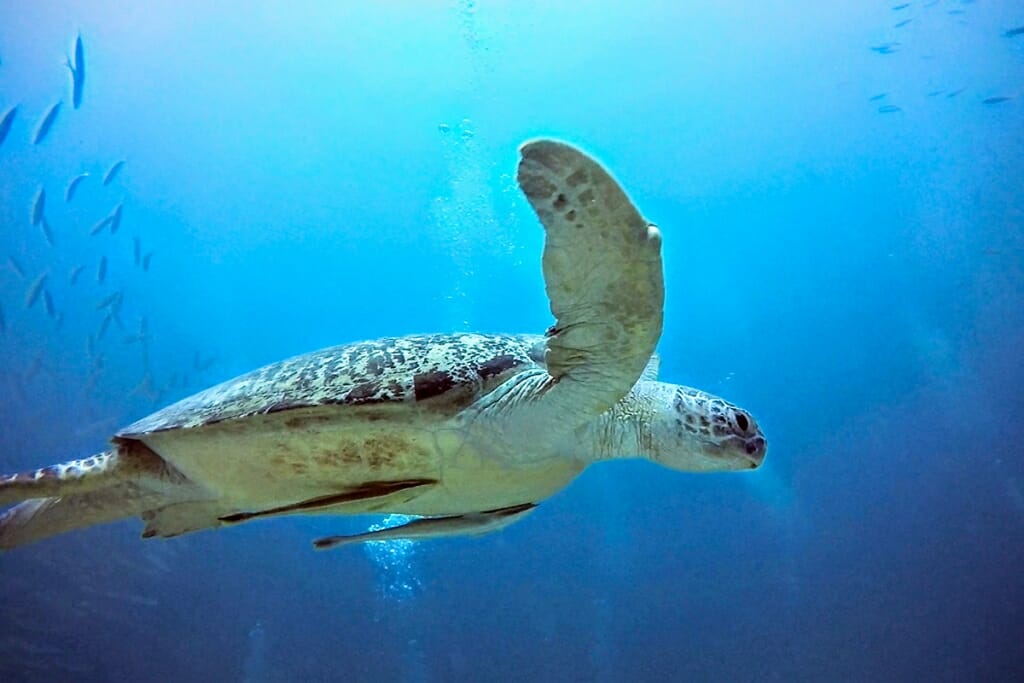
We visited Sipadan during a two week Borneo trip, spending 5 nights on the island. It’s a world-class dive location off the east coast of Borneo, Sabah. Here, you can find huge varieties of schooling fish, Reef Sharks, Turtles and, if you are lucky, Hammerhead Sharks and the majestic Manta Rays. The island itself is also stunning, with white sand and glistening waters. What makes diving on Sipadan Island really special is the sheer amount of fish and marine creatures you will see. You won’t see a few turtles on a dive, you’ll see plenty!
Permits are limited to 125 per day, so you’ll likely also dive at neighbouring island Mabul which hosts a different kind of diving. Here, you’ll find sunken boats and vehicles to explore and weird and wonderful critters such as the cleverly disguised Frogfish. Mabul is where most dive shops operate from, we stayed at some cool bungalows set out over the water with Billabong Scuba.
Fly into Tawau airport and head east to Semporna, which is where you’ll start your diving adventure or go North towards the Kinabatangan River.
Tunku Abdul Rahman Park
By Penny from Globe Trove
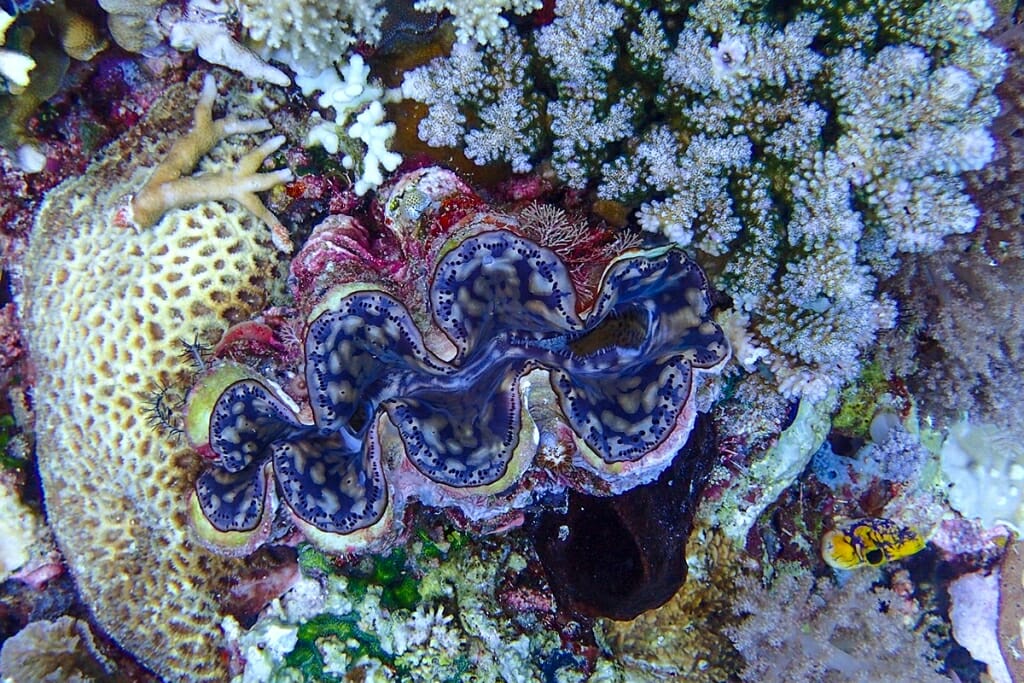
The island of Borneo is often considered to be one of the most ecologically diverse places in the world. This is both on land and in the water. I hadn’t quite realized just how beautiful it was until I found myself searching for things to do in Kota Kinabalu.
One of the things that popped up on my radar was Tunku Abdul Rahman Park, a spot in the middle of the ocean that is comprised of a number of islands and the blue waters that surround them. While you can head out to these islands for snorkelling trips or just plain island hopping, we also added a bit of diving to the fun.
To this day, I can say that it remains one of the most beautiful places to spot coral that I have been to. Aside from coral, you will also find eels, colourful fish, gorgeous giant clams, stingrays and so much more. It is almost as if you could dive every day and see something different! So, if you are looking for underwater wildlife in Borneo, head to Kota Kinabalu and visit the many islands.
Best Places to See Borneo Wildlife in Sarawak
Gunung Mulu National Park
By Sylvia from Wapiti Travel
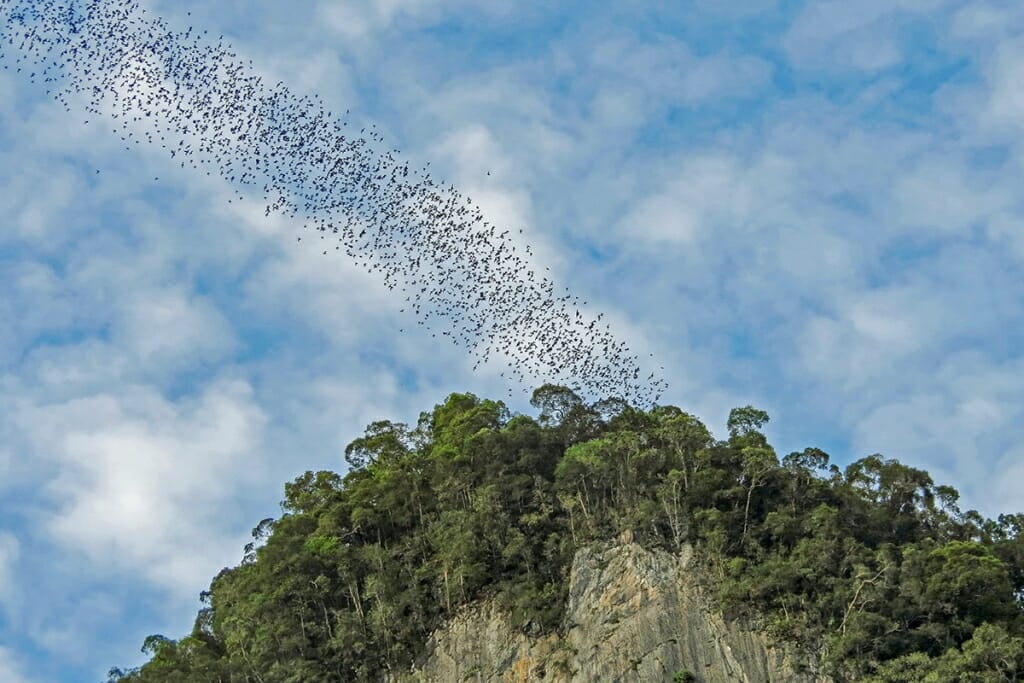
The Gunung Mulu National Park is a tropical rainforest. It can be visited all year round but as the vegetation suggests you have a good chance of rain. The wettest months are October to January and May to June.
Don’t expect to see any large wildlife in Mulu; those were chased and killed before the region was recognized as a national park. Despite that, it is still one of the top things to do in Borneo as the park houses a wide range of smaller mammals and reptiles and a huge selection of colorful birds. During our visit, we spotted monkeys, many millipedes, walking sticks, dragonflies, butterflies, and salamanders.
Nothing beats the stars of the park, which are the bats. At dusk they fly out of the caves in huge swarms which is a spectacle in itself, the park has even created an observation post from where you can witness this event.
The fastest way to get to Gunung Mulu is by plane. There are daily scheduled flights from Miri. Alternatively, you could make the trip by boat from Miri, but that’s only if there’s enough water in the Tutoh River.
Bako National Park
By Ania from The Travelling Twins
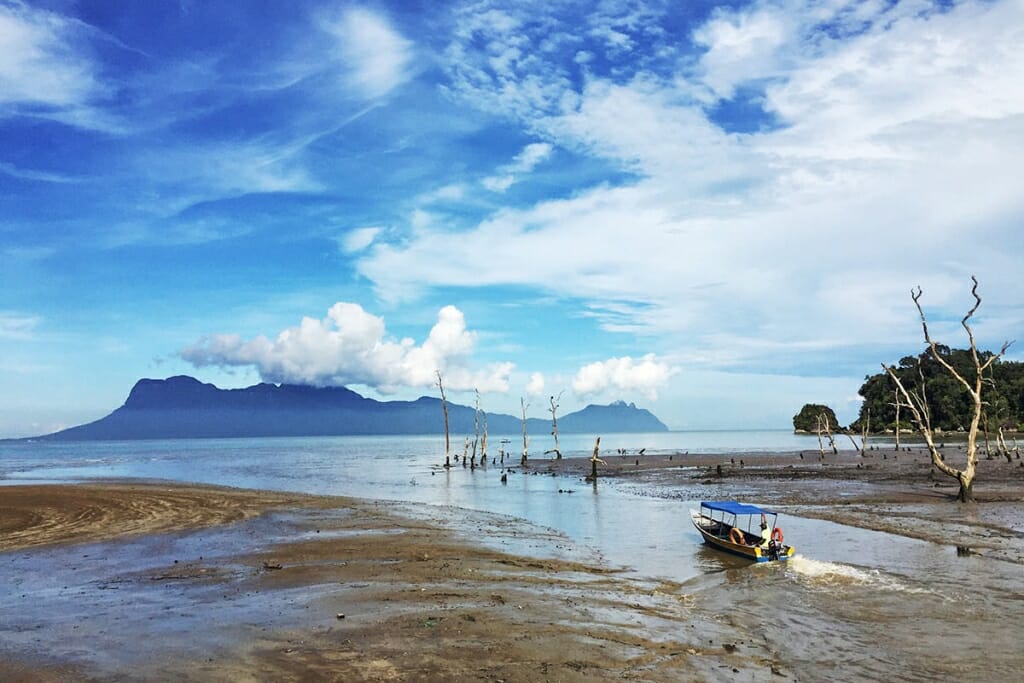
Just 40km from Kuching, Bako has everything, starting with the water crossing to get there. At the edge of the water live the mudskippers. For my girls, chasing mud-skipping fish was the closest thing to paradise on Earth.
The rest of Bako was wonderful too. We saw lots of wildlife, as well as the endangered proboscis monkeys. I remember silver leaf monkeys, cheeky long-tail macaques, and a bearded boar. The girls love reptiles, so all the lizards and snakes were a treat, too.
Bako peninsula has almost every type of vegetation found in Borneo. Another charmer for the kids – there were several insect-eating plants!
On your first visit, taking the guided hike is a good option. Our guide pointed out wildlife and plants we would never have seen on our own. Especially as a day trip from Kuching with kids this worked very well for us. The tour included transport by road and boat and the guided trek.
Our guided tour for one adult and two children cost RM500 ($120). If you decide to go on your own it’s much cheaper, the costs to consider are: Taxi to the pier approx RM20 ($5), Place in shared boat RM20 ($5), Entry to the park, Foreign Adult: RM20 ($5), Foreign Child/Senior: RM7 ($2).
Best Places To See Borneo Wildlife in Kalimantan
Tanjung Puting National Park
By Amy from Out Chasing Stars
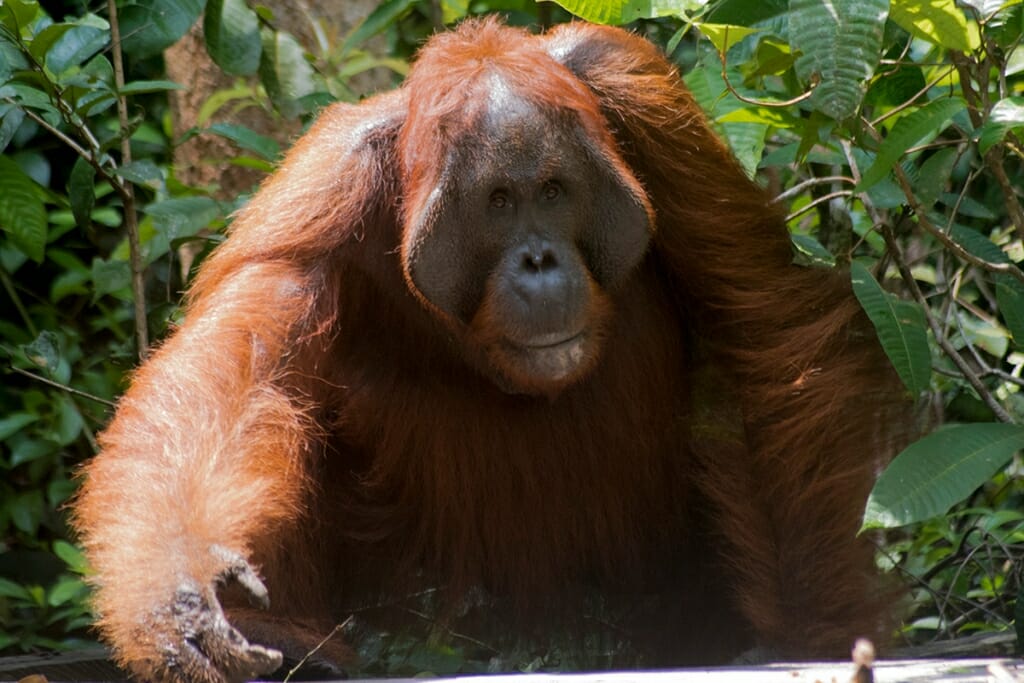
Taking a river cruise to Tanjung Puting National Park in Indonesian Borneo is the best way to connect with the local land and its inhabitants. On our river cruise, we spotted many different kinds of primates, birds, and reptiles. Local villagers, from working the palm oil plantations, led us on night safaris to spot rare animals of Borneo. And the biggest attraction is the orangutan, which we saw at three different feeding platforms.
Tanjung Puting is home to Camp Leakey, started by Dr. Biruté Galdikas, which is the leading facility for orangutan research in the world. Orangutans are native to Borneo (Indonesia and Malaysia) and Sumatra (also Indonesia) only, and Camp Leakey and its feeding stations throughout Tanjung Puting are the best way to guarantee an orangutan sighting.
We booked our river cruise on a private klotok, a small boat. There are no luxury options here! The cruise is bare bones for amenities but makes up for it in wildlife.
The area is a victim of deforestation from palm oil plantations, and mining operations upriver are polluting the ecosystem through the water. There are creatures living in the forests of Tanjung Puting that we barely understand and we are losing our opportunity to see and research this wildlife.
Kutai National Park
By Patricia from Ze Wandering Frogs
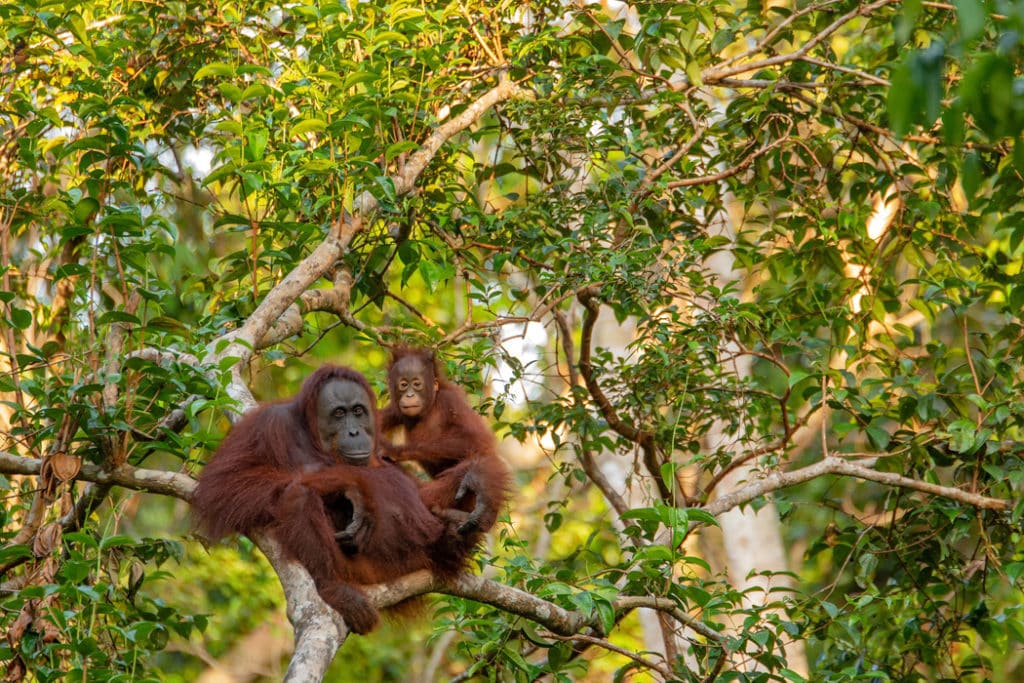
When it comes to seeing orangutans, Kutai National Park is not as well-known as other more significant parks in Borneo. But that’s where we decided to go and see the wild apes as we were looking for a less popular park with fewer visitors. About 600 orangutans live in the park, including about 50 within close range of the lodge. Though the jungle around the park has been steadily shrinking due to deforestation, the population of the park has increased in recent years.
We stayed three days and two nights in the rustic lodge and went on a couple of jungle walks with a dedicated park ranger. On each occasion, we saw diverse groups of orangutans. A mum with her young baby. An adolescent trying to show off his territories. A few adults snacking on figs, bark, and leaves. On our last morning, a young adult even came close to our lodge, sitting in a neesia tree and feasting on the ripe fruits. We couldn’t have hoped for a better experience!
To get to Kutai, you need first to reach Samarinda, Kalimantan. You can either arrange an organized tour from there that will have the trip planned for you. Or travel independently from Samarinda to Sangatta by bus. A small boat ride is necessary to access the park and is best scheduled with the park rangers. The lodge is very basic, with mattresses on the floor and bucket showers, but meals can be organized by the park as long as you arrange them ahead of time.
Best time to visit Borneo
Borneo is one of the wettest places on Earth. Even outside of the rainy season, tropical downpours are frequent, so be prepared to get drenched at least once during your stay.
For the best chances of staying dry, visit between April and October. It also happens to be the best time for spotting wildlife, as it coincides with the flowering and fruiting season.
Do you have any questions about wildlife watching in Borneo? Don’t think twice, leave a comment!
More on Borneo Wildilfe Adventures
- 4 Days in Danum Valley: Ancient Rainforest and Spectacular Wildlife
- Guide to Planning Kinabatangan River Cruise in Borneo
- 28 Incredible Borneo Animals and best places to see Borneo wildlife
- On the trail of the Amazing Sunda Clouded Leopard in Borneo
- A Different Kind of Borneo Wildlife Holidays: Deramakot Forest Reserve
- Where to see wild cats in Borneo?
- On the trail of the Flat-headed cat in Borneo
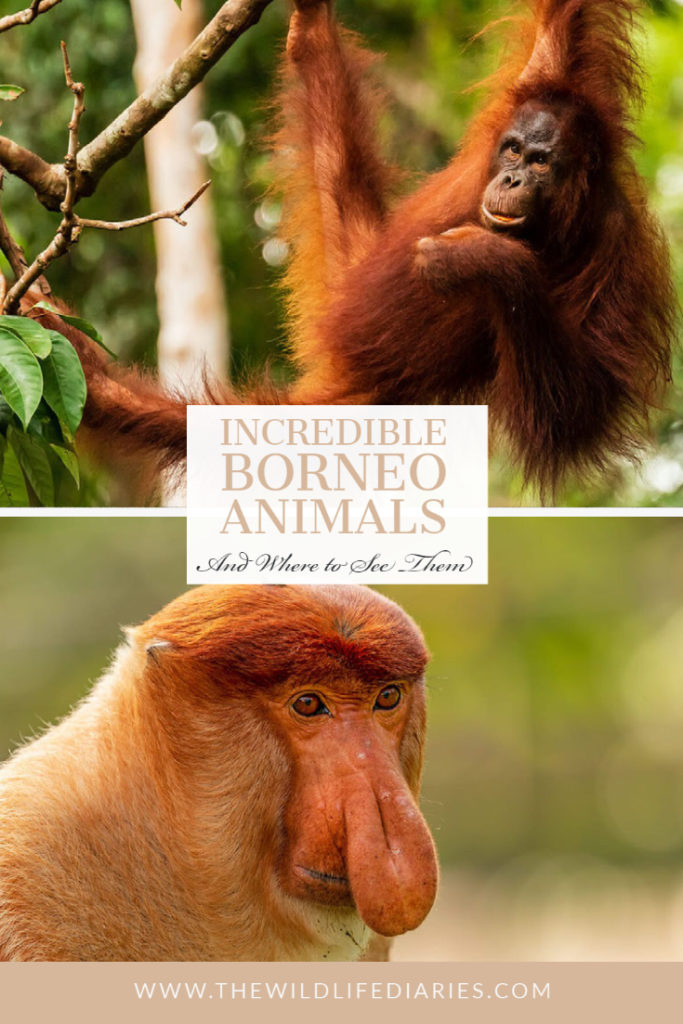

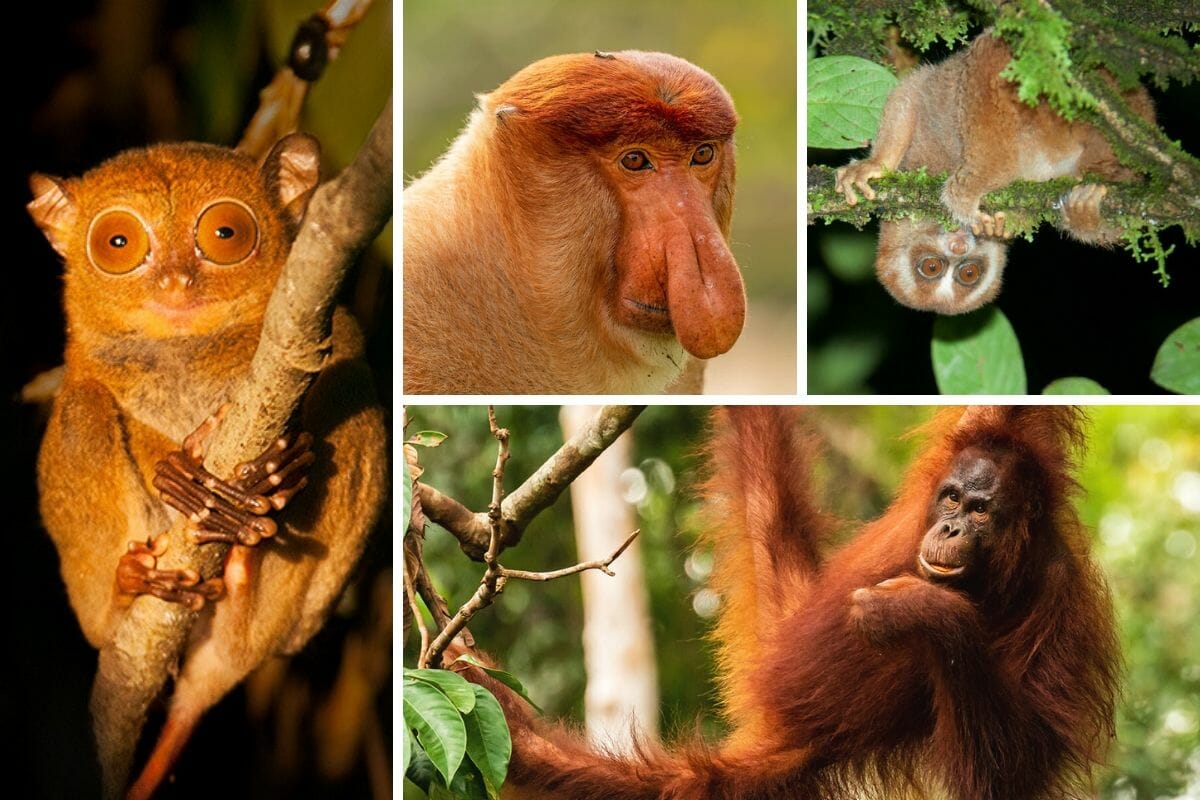
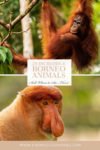
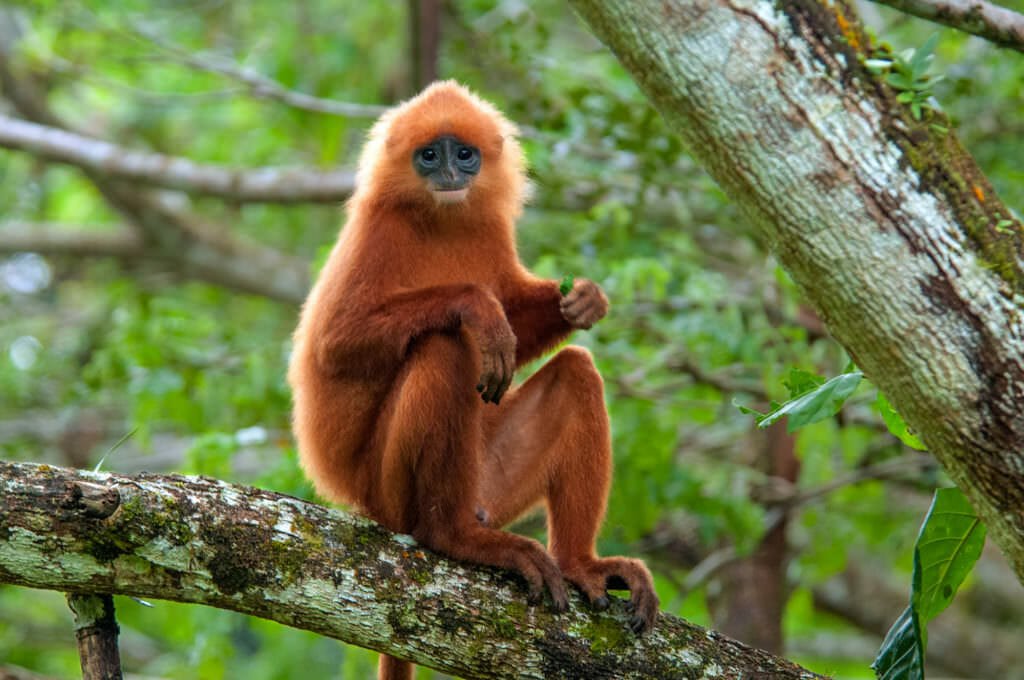
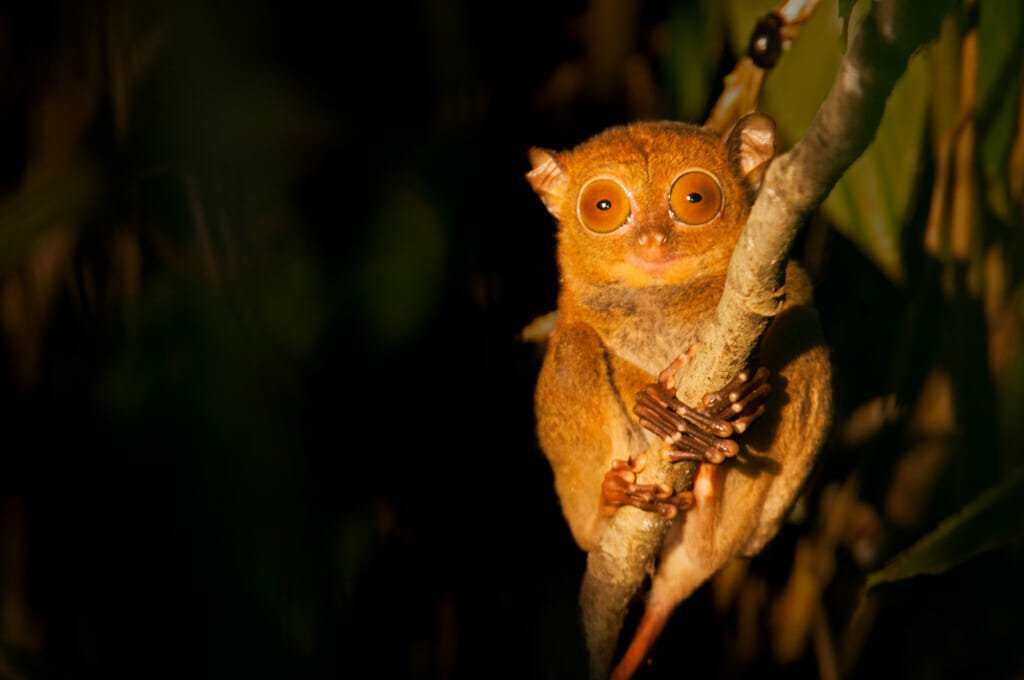
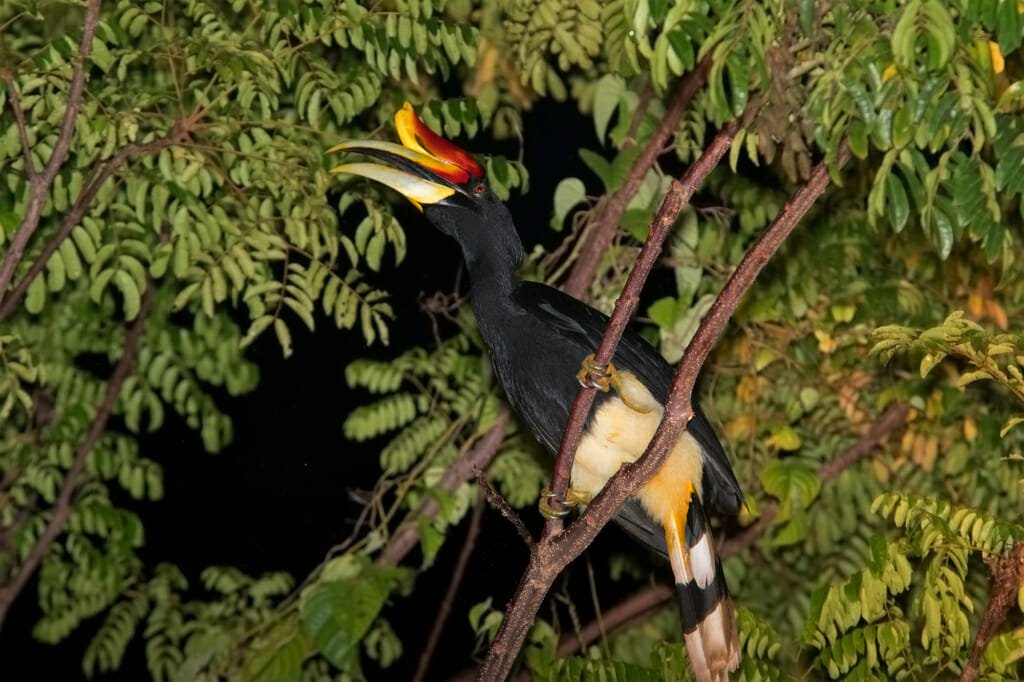
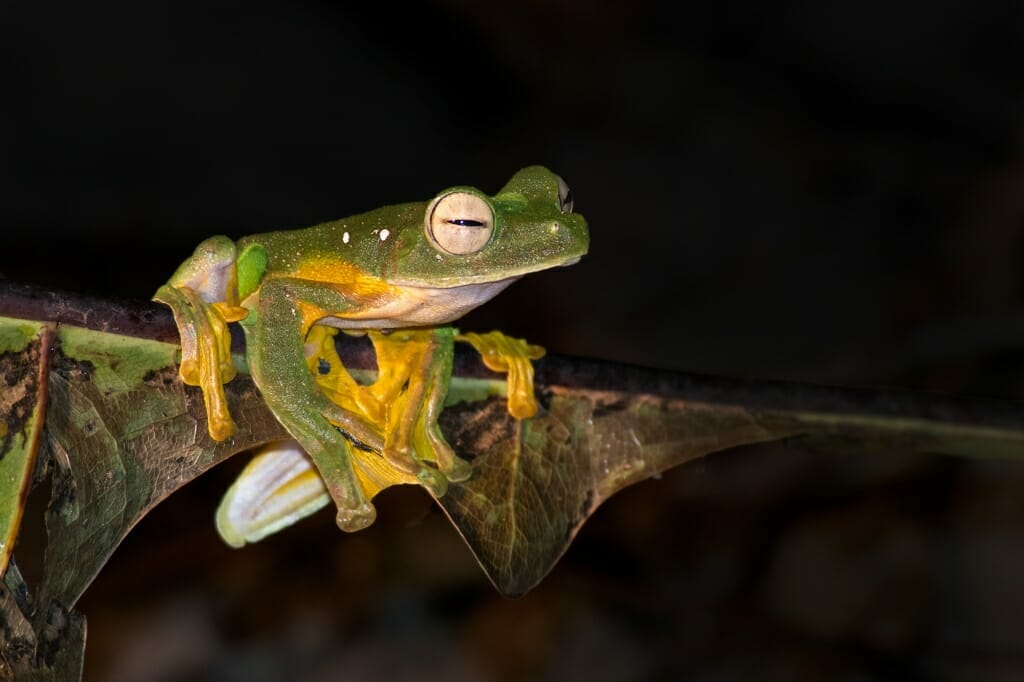
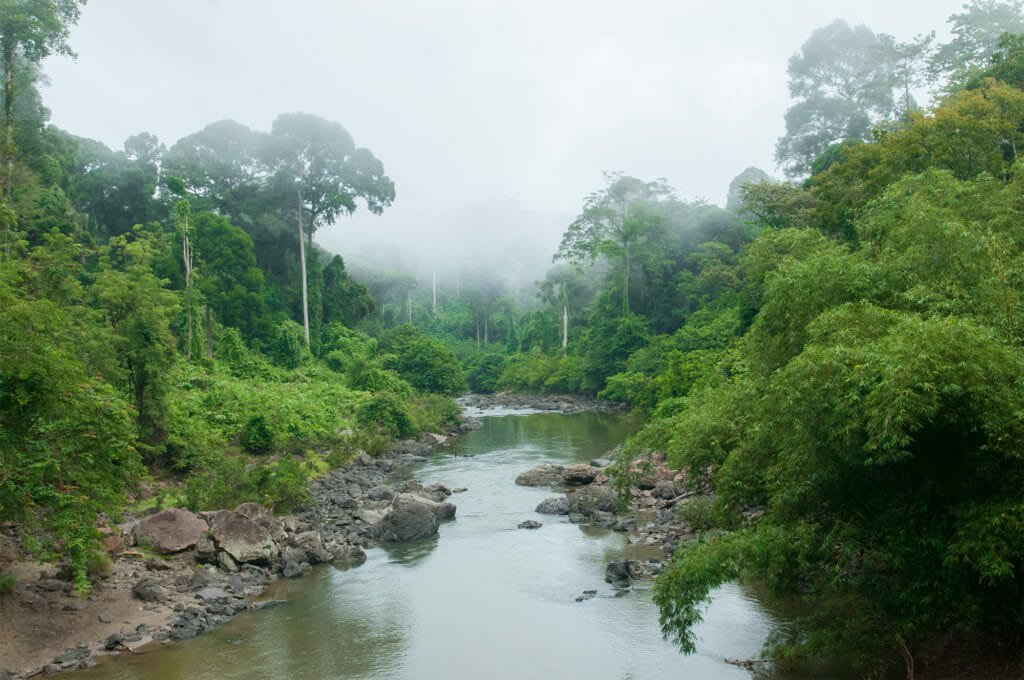
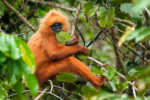
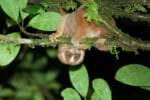
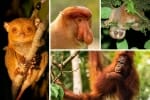
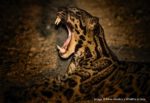
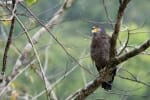
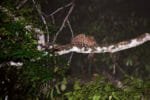
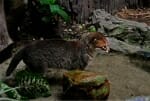
Thoroughly enjoyed your accounts of your time in Sabah and Sarawak. Would you happen to know where I might be able to see the slow loris and tarsier on the Kalimantan side? With thanks.
Thank you for dropping by :). I don’t have any specific intel on Kalimantan, but I can say that slow lorises are quite common around the island. They are usually quite high up in the canopy so may not be easy to see well, but there are definitely quite a few of them around. Tarsiers are trickier. I haven’t seen them anywhere apart from the Kinabatangan River.
Wow, such an amazing animals, thanks for share this blog with us.